
Celebrating a century
We look pretty good for our age, don’t you think? Believe it or not, Reader’s Digest was first published all the way back in 1922—a time in America when drinking took place in secret; radio broadcasts were novel, entertaining, and informative (much like Twitter is today); women had only recently gotten the right to vote; and the Roaring Twenties were in full swing, with flappers and follies taking center stage. A lot has happened in the past 100 years, to say the least, and a look through Reader’s Digest’s covers will show you just how much.
We’re happy to share our birth year (and our 100th anniversary) with the Lincoln Memorial, Jack Kerouac, the BBC, the blender, Wimbledon’s Centre Court, the Harlem Renaissance, The Velveteen Rabbit, Betty White, and so many more people, places, events, and inventions that it’s hard to imagine life without. Take a look at 100 things turning 100 in 2022 and some seriously interesting facts about them, and then continue your trip back in time with the funniest jokes and quotes of the last century.
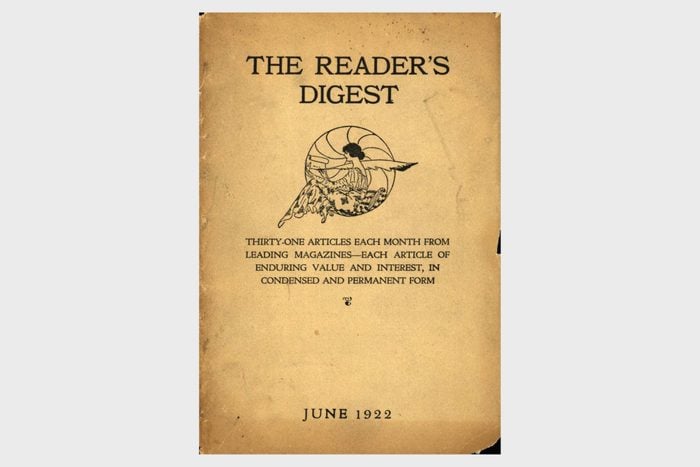
Reader’s Digest
We’ve certainly changed with the times, but our mission remains the same: to unite readers by sharing stories, laughs, and great advice. First published in 1922 by DeWitt Wallace and Lila Acheson Wallace, Reader’s Digest was unlike anything else out there. DeWitt Wallace could be considered the first content curator, since he gathered the best of the best from a variety of publications and condensed the information into what became known as “the Reader’s Digest version.” At the time, each issue contained 31 articles. Why? So that there would be one to read each day of the month.
By the 1940s, Reader’s Digest had become the best-selling publication in the country—only outsold by the Bible. Over the years, it published groundbreaking and influential pieces on everything from seatbelt safety laws and smoking to civil rights, and even helped to establish huge brands like Pepperidge Farm. Now, 100 years later, Reader’s Digest is still going strong. The magazine is published in 22 countries, and the website delivers content wherever you are—including right here, right now!
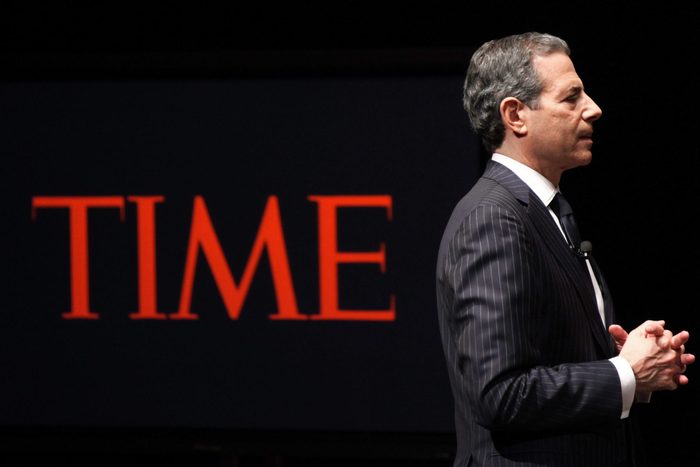
Time Inc.
Founded by Henry Luce in 1922, Time Inc. published its first issue of Time on March 3, 1923. Joseph G. Cannon (a former Speaker of the House) was on the cover, and the magazine “contained word of the first helicopter, a possible change in divorce laws, the release of the film Adam’s Rib, a new one-cent cigarette tax in Indiana and the latest figures in German reparation payments—not to mention a critical trashing of [T.S. Eliot’s] The Waste Land,” according to Time‘s website. Time Inc. also went on to create iconic magazines such as Fortune (1930), Life (1936), and Sports Illustrated (1954), as well as Entertainment Weekly, People, and InStyle, before the company was bought by the Meredith Corporation in 2018. Here are the best quotes from famous people to appear in Reader’s Digest‘s pages over the last 100 years.

WNYC Radio
Many now listen to podcasts from anywhere in the world via WNYC, but back in 1922, WNYC was just a kernel of an idea—a radio station owned and operated by New York City. At the time, $50,000 was approved to establish a “Municipal Wireless Broadcasting Station,” but a number of hurdles needed to be jumped before it actually hit the airwaves more than two years later. One issue was finding suitable radio transmitters; eventually, a secondhand transmitter was located in Brazil, and once it arrived, WNYC began broadcasting on 570 AM. In case you were wondering, this is why radio stations always start with a “K” or “W.”
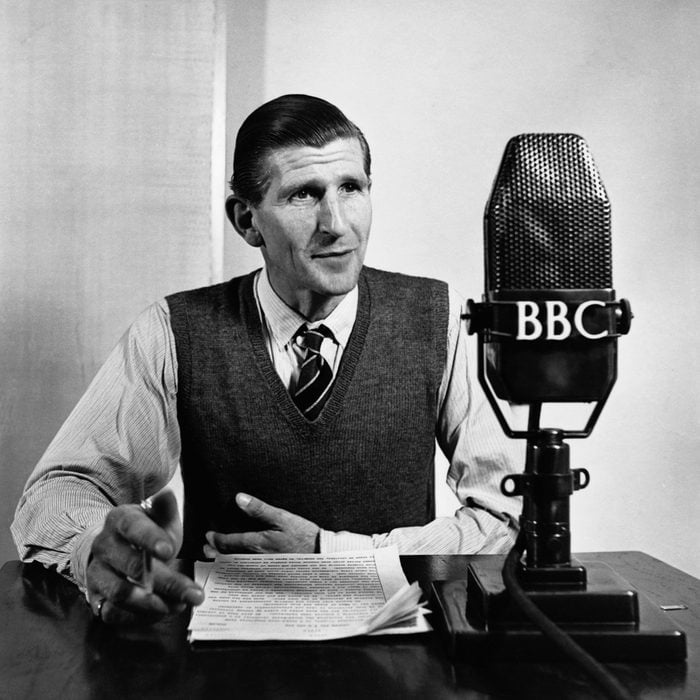
The BBC
The British Broadcasting Company (the BBC) was founded on October 18, 1922, and less than a month later, it started airing daily radio broadcasts out of a London studio. Today, the BBC still has a strong radio presence in the U.K., with numerous channels dedicated to sports, music, news, and more. It also has several TV channels, award-winning podcasts through its BBC Sounds app, and a website.

Stouffer’s
Stouffer’s stuffing may have been a staple at your Thanksgiving dinner table growing up, and today, the company’s many products line your grocer’s freezer shelves. But this huge corporation started as a small dairy stand, which Abraham and Mahala Stouffer founded in downtown Cleveland in 1922, serving fresh buttermilk and free crackers.

State Farm
Like a good neighbor, State Farm is there. You’ve heard the jingle…and it’s probably stuck in your head now. (Sorry!) There’s also a good chance you have the insurance: State Farm insures more cars and homes than any other company in the United States, and it’s ranked 36 on the Fortune 500’s list of biggest companies. It also earned the distinction of being one of Reader’s Digest’s most trusted brands of 2021. But every big company had to start somewhere, and for State Farm, that was back in 1922. Founded by retired farmer and insurance salesman George Jacob “G.J.” Mecherle, it was originally a single-line auto insurer.
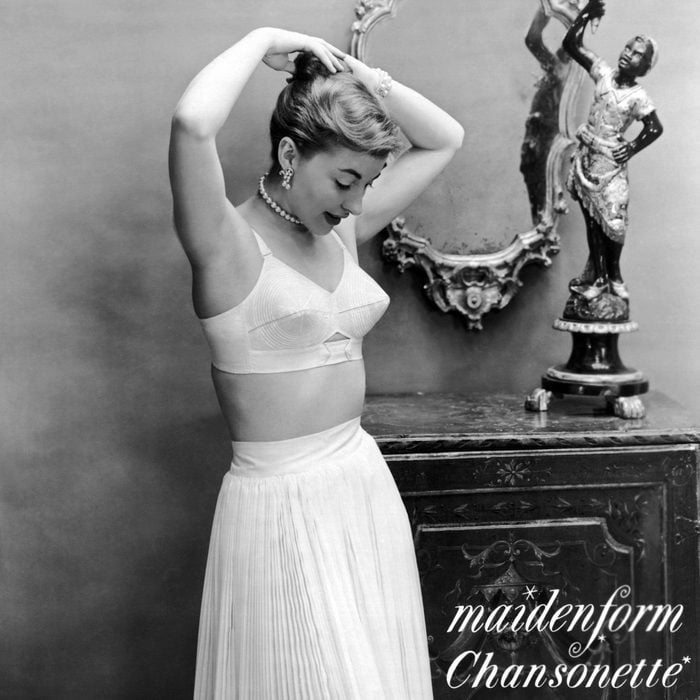
Maidenform
While flappers favored a flat-chested style, dress shop owners Ida Rosenthal and Enid Bissett weren’t fans of the way dresses looked over constricting undergarments. So, in 1922, they decided to rethink the boyish form vest and create an undergarment with two cups separated by a piece of elastic. With Rosenthal’s husband, William, they refined the design and called it “the Maiden Form Brassiere,” since it lifted and enhanced the shape of the bust. It was originally built into their dresses, but customers started requesting separate bras for their other clothing—and a new business was born! The Rosenthals and Bissett founded the Enid Manufacturing Co. in 1925 to produce the bras but changed the name to the Maiden Form Brassiere Co. four years later.

Jaguar
In 1922, neither the name Jaguar nor the luxury cars for which it became famous were yet in existence. Instead, 100 years ago, William Walmsley and William Lyons founded the Swallow Sidecar Company, which would later become known as Jaguar. It originally manufactured sidecars for motorcycles, and in the 1930s, it expanded into cars and changed its name to SS Cars Limited. The final name change to Jaguar came on March 23, 1945, because “in the context of World War II, the letters ‘SS’ had a decidedly evil connotation,” according to Thrillist.
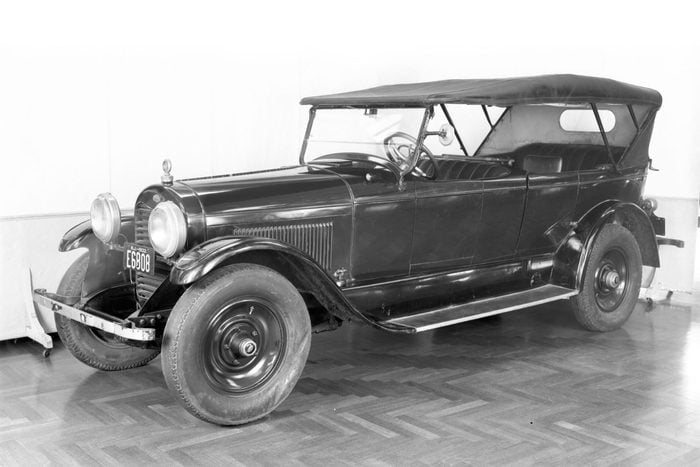
Ford Motor’s purchase of Lincoln
While Ford Motor Company produced its first car in 1903, it was the February 4, 1922 purchase of the Lincoln Motor Company that distinguished it as a luxury brand. The Ford family purchased Lincoln from its founders Henry and Wilfred Leland for $8 million, equivalent to roughly $132 million today. The 1923 Lincoln Model L Touring Car (shown) was iconic for the time. Edsel Ford, Henry’s son, served as president of Lincoln from 1922 to 1943.

KB Toys
Founded in 1922 but defunct since 2009, KB Toys made millions of childhoods happier over its nearly 90-year history. In recent years, there’s been talk of a comeback, especially after Toys ‘R’ Us went out of business in 2018, but that has yet to happen. For another trip down memory lane, find out the most popular toy the year you were born.

Pressman Toys
Classic games such as Rummikub and Mastermind have been keeping families entertained since this company opened for business in 1922. Pressman Toys is also responsible for “making Chinese Checkers into a craze that swept the nation in the 1920s,” according to Pressman’s official history.
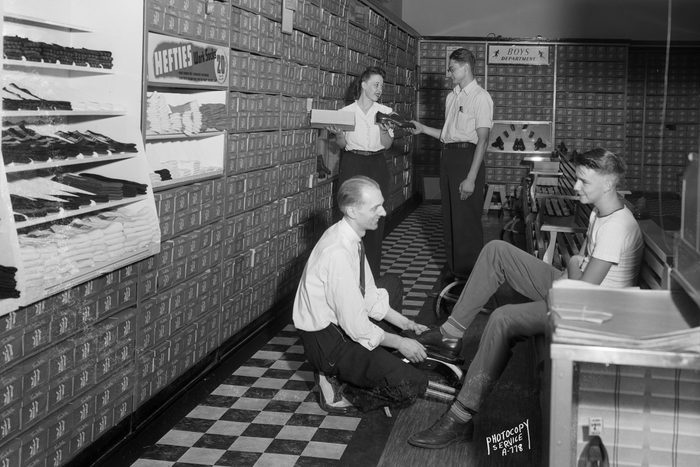
Thom McAn Shoes
The first Thom McAn shoe store opened on Third Avenue in New York City in 1922 as a way to sell quality shoes for just $3. At its zenith, there were nearly 8,000 dedicated Thom McAn stores in malls across the country, but today, the brand can be found only inside the Sears outposts still in business and on Sears.com.

Raytheon
You may not know this company’s name, but the world would be a very different place without it. Founded in 1922 as the American Appliance Company, this early tech start-up originally focused on new refrigeration technology, then shifted its focus to electronics. Over the years, per the company’s website, Raytheon has become “a technology and innovation leader specializing in defense, civil government and cybersecurity solutions,” producing everything from ballistic missile defense systems to innovative AI machines. These are the inventions that have changed the world in the last decade.

USAA
Today, the United Services Automobile Association (USAA) serves millions of members as “one of the few fully integrated financial services organizations in America.” The group has certainly come a long way from its humble beginnings in 1922, when 25 army officers in San Antonio decided to insure one another’s vehicles.
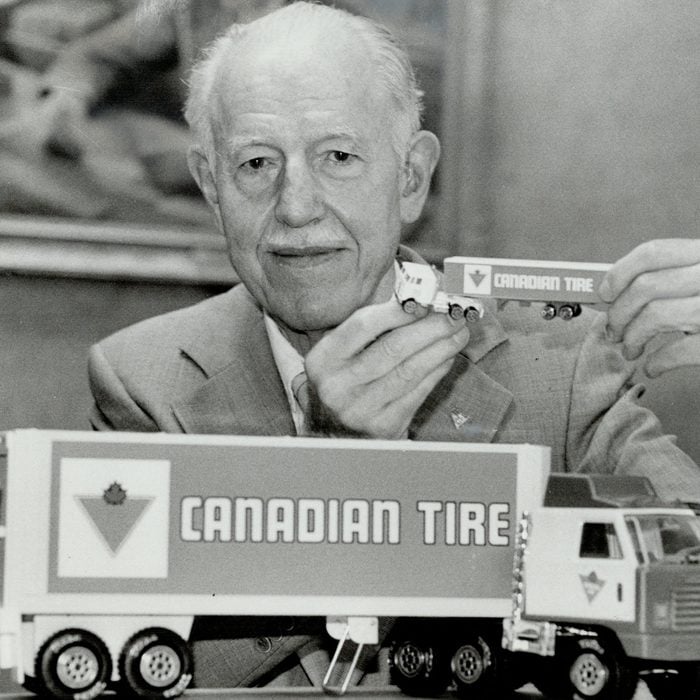
Canadian Tire
Though it was founded in Toronto by brothers J.W. and A.J. Billes after they bought the Hamilton Tire and Garage in 1922, the company didn’t officially become the Canadian Tire Corporation until 1927. Today, Canadian Tire operates 1,700 stores and gas stations in every Canadian province and territory except Nunavut. By the way, this is why tires are the most important car safety feature.

Belle Tire
The Midwestern tire company that today employs around 2,000 people in 120-plus retail locations was founded in 1922 by Sam Waze. Why the pretty name? Waze named the company after his wife, Belle. The first location was on Grand River Avenue in Detroit.
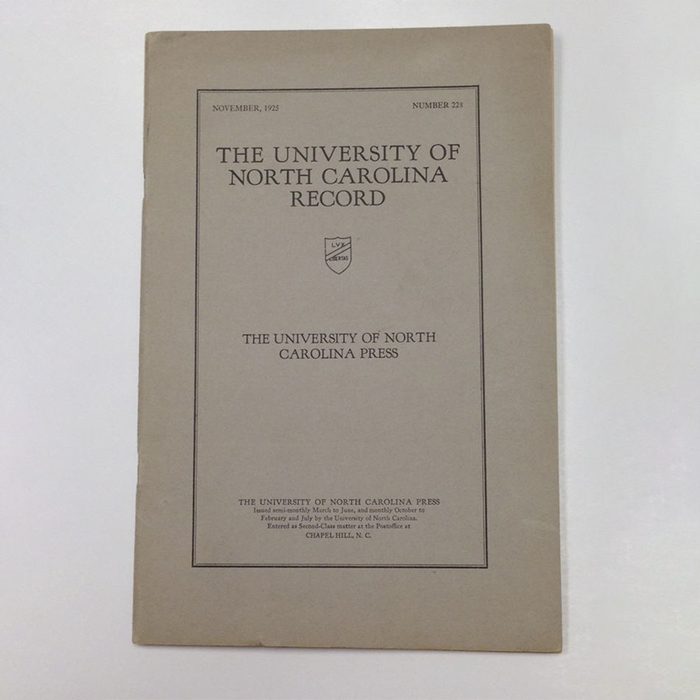
The University of North Carolina Press
Established in 1922, UNC Press holds the distinction of being the first university press in the South and among the first in the country. It was also the first scholarly publisher to develop an ongoing program of books by and about African Americans, beginning in the late 1920s and continuing today with some important books about racism.

The Barnes Foundation
The Barnes, once an impressive private art collection, made news in 2012 when it moved from its suburban home to a massive new public art museum space in Philadelphia. Albert C. Barnes—who made his money from codeveloping Argyrol, the compound that battled gonorrhea and ear, nose, and throat inflammation, then serendipitously selling his company just before the 1929 stock market crash and Great Depression—had his art on display in Merion, Pennsylvania, since 1922.

Murray State University
In September 1922, the city of Murray in Kentucky was chosen as the site of a new normal school, an institution for the training of teachers. Murray State Normal School started operations in the fall of 1923 with 87 students and eight faculty members before becoming known as Murray State University in 1966. Today, the school has expanded in scope and size, with five academic colleges, two schools, and nearly 10,000 undergraduate and graduate students.

Regis Corporation
Never heard of the Regis Corporation? It’s the multibillion-dollar company behind popular hair-salon chains like Supercuts, Sassoon, MasterCuts, and more. But back in 1922, it was the unassuming Kunin Beauty Salon in Edina, Minnesota, run by Paul and Florence Kunin. Support some of today’s burgeoning women-owned businesses and who knows where they’ll be in 100 years!

The blender
You have Stephen Poplawski to thank for your smoothies, margaritas, and assorted purees. In 1922, he patented the first blender, which featured its trademark spinning blade at the bottom of a container. While it was developed by the Arnold Electric Company, the design was improved upon and popularized by Fred Waring in the 1930s. It’s hard to imagine a time when the blender didn’t exist—like these other important inventions created the year you were born.

The radial arm saw
Woodworking is hard work…especially if you don’t have the right tools. That’s something Raymond DeWalt realized as the supervisor of a woodworking mill. To cut costs, increase productivity, and make jobs less labor-intensive, he created a number of inventions, including the radial arm saw in 1922. This versatile stationary tool not only made the work easier—it also performed a variety of cuts. It was originally known as the DeWalt Wonder-Worker.
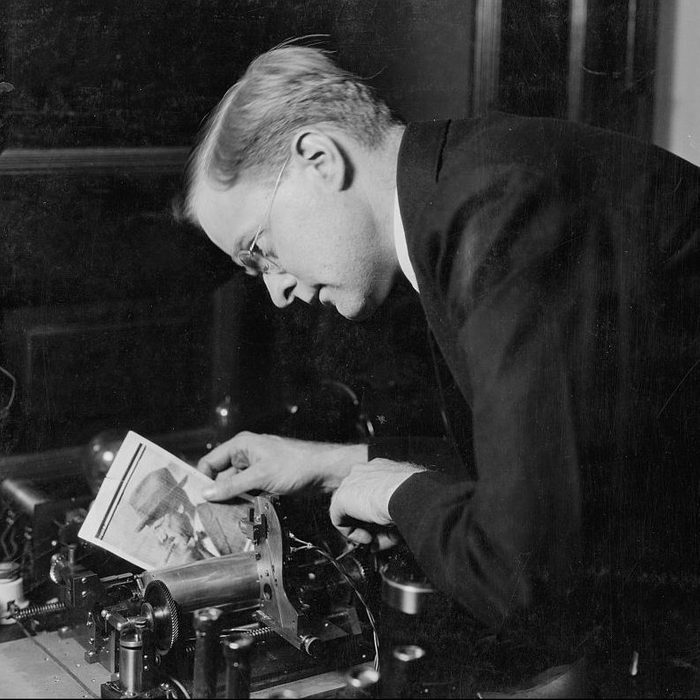
The first transatlantic fax
While most commonly associated with offices in the 1970s and ’80s, fax machines have been around since the mid–19th century. In 1922, RCA (the Radio Corporation of America) offered the first transatlantic fax service. Back then, though, fax machines weren’t used in private businesses. Instead, they were mainly used by newspapers for transmitting photographs, as well as by the weather service for sending weather maps.
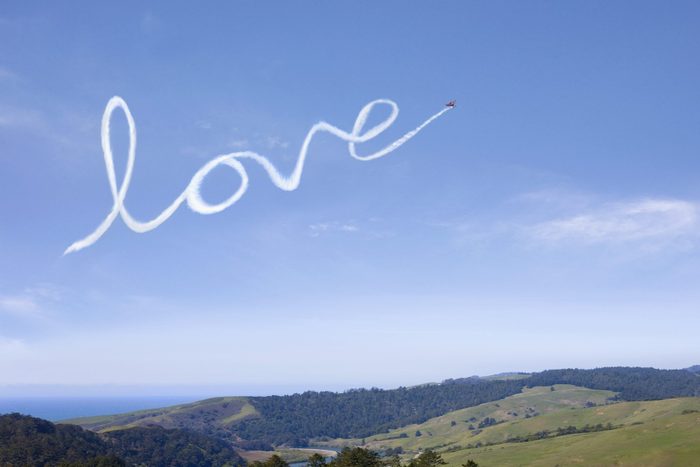
Skywriting
While the British military first used skywriting in World War I to convey information to troops, it wasn’t until 1922 that it was used in civilian life—and in advertising. That was the brainchild of Royal Air Force pilot Captain Cyril Turner, who inked a deal with the Daily Mail to write the newspaper’s name in smoke over Epsom Downs on Derby Day. Later that year, America also got to see Turner’s handiwork. First he spelled out “Hello USA” over New York City and then, the next day, “Call Vanderbilt 7200,” the phone number of the hotel he was staying at. In less than three hours, the hotel received 47,000 calls! Here are more cool everyday things that were designed for World War I.
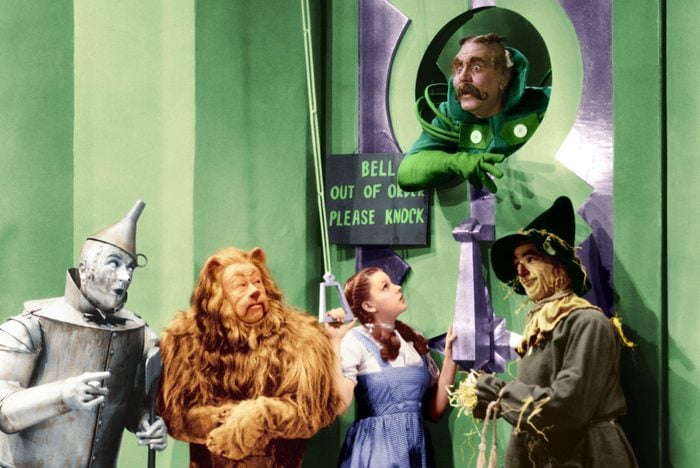
Technicolor movies
Think everything was black and white until The Wizard of Oz hit theaters in the 1930s? Think again. According to the National Film Preservation Foundation, artificially added color was somewhat commonplace in films, though its effects have been lost over time. But the Technicolor Motion Picture Corporation stepped things up a notch. The first successful Technicolor movie, The Toll of the Sea, premiered in 1922 at the Rialto Theatre in New York City. It was processed using just two color primaries: orange-red and green-blue hues. Celebrate Technicolor’s 100th birthday by watching the best dramas or funny movies of all time.
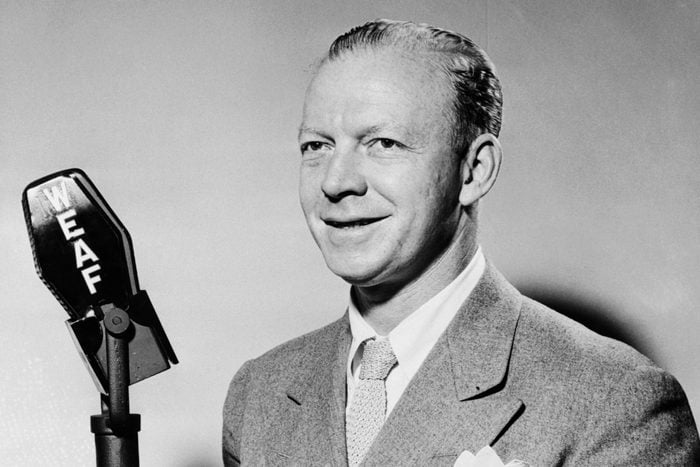
Radio commercials
Radio was still new in 1922, having transitioned from amateur operators and homemade receivers to a corporate enterprise just a year prior. But when WEAF in New York City aired the first-ever radio commercial, radio would never be the same again. So, what was it? An advertisement for Queensboro Realty, which cost $100 for ten minutes of air time, according to NPR.

Chocolate-covered ice cream pops
Simple yet brilliant—that’s the best way to describe chocolate-covered ice cream on a stick, which was first marketed as the Eskimo Pie. As the story goes, sweets-shop owner Christian Kent Nelson got the idea for this summer staple when a little boy in his store couldn’t decide if he wanted ice cream or a chocolate bar. Nelson eventually came up with the perfect recipe to get the melted chocolate on the ice cream and patented his creation in 1922. Unfortunately, while the product was a hit, the patent was a mess. Instead of protecting his specific invention, the patent was incredibly broad and attempted to ban anyone else from making covered frozen treats. Legal battles ensued and nearly bankrupted the company, and the whole debacle ended up serving as a warning for future patent seekers.
Various companies have owned the Eskimo Pie over the years, and the latest, Dreyer’s Grand Ice Cream, recently decided to change the brand’s name to Edy’s Pie. “We are committed to being a part of the solution on racial equality, and recognize the term is derogatory,” noted the company’s head of marketing in a statement in 2020.
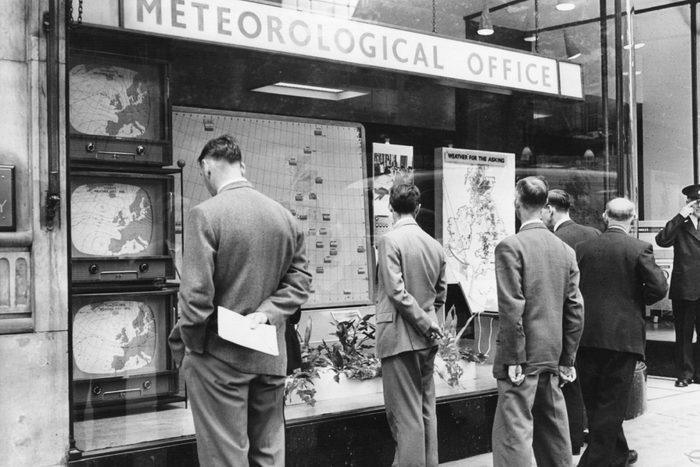
Modern-day weather forecasting
Lewis Fry Richardson was way ahead of his time. In 1922, the British scientist and mathematician published Weather Prediction by Numerical Process, which is the basis for today’s weather-forecasting models. But the process was complicated and largely unusable at the time, since “he reckoned it would need 60,000 people working with slide rules to predict tomorrow’s weather before it arrived,” according to the BBC. Computers changed all that, however, in the early 1950s.

Waterskiing
If at first you don’t succeed, try, try again! That’s certainly what Ralph Samuelson, an 18-year-old from Lake City, Minnesota, did when he got the idea to “ski” on water in the summer of 1922. First he tried regular snow skis, then staves of a barrel, but he ultimately had success with two eight-foot-long planks of wood. He curved the planks’ ends upward, used a leather strap to hold his feet in place, fashioned an iron ring and sash for his makeshift connecting rope, leaned back with the ski tips pointing up, and the rest is history. Sadly, Samuelson didn’t think to patent his invention, so while he gets the credit, he likely didn’t get much of the money associated with the leisure sport. Next, discover the most famous inventions from every state.

The Rose Bowl
Arguably college football’s most famous stadium, the Rose Bowl was completed on October 28, 1922, and cost $272,198.20. In the months before it opened, newspapers referred to the 57,000-seat Pasadena stadium as the Tournament of Roses Stadium, the Tournament of Roses Bowl, and eventually the Rose Bowl. A hundred years later, it regularly hosts scores of football, soccer, and music fans.

Yankee Stadium
In May 1922, Mayor Hylan closed streets in the Bronx as construction on Yankee Stadium began at an initial cost of $2 million, per the New York Times. The first game, however, wouldn’t be played until the following spring; the Yankees beat the Red Sox 4–1, and the season ended with the Yankees’ first World Series victory. The “House That Ruth Built” would go on to see a total of 26 World Series championships before the Bronx Bombers moved to a new stadium in 2009.

Centre Court at Wimbledon
Originally a 14,000-seat tennis stadium, the famed Centre Court at the All England Lawn Tennis Club hosted its first match in 1922. Remarkably, the capacity for this famous court has barely expanded over the years; today, it holds 14,979. And surprisingly, Centre Court is not playable for members of Wimbledon—this immaculate patch of perennial ryegrass is only used for the Championships, which are held once a year.
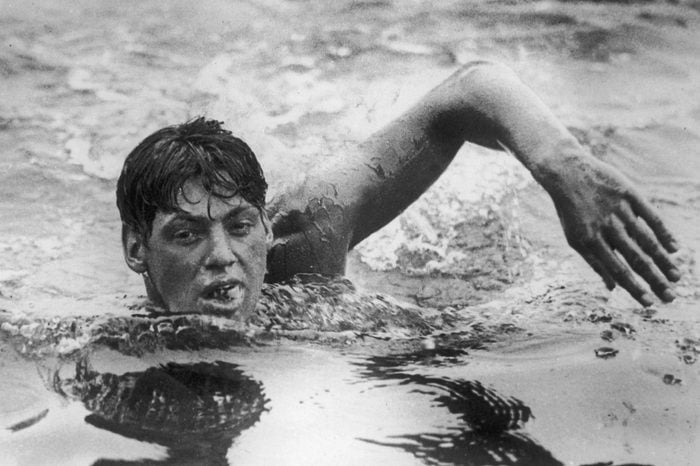
100-meter freestyle swimming “minute barrier” broken
Johnny Weissmuller, one of the fastest swimmers of the 20th century, became the first athlete to break the minute barrier in the 100-meter freestyle. It is believed that he was undefeated in official competition for the entirety of his competitive career. Later, he became an actor and played Tarzan in 12 feature-length films. It is Weissmuller’s Tarzan yell that is the most famous.

The NFL’s official name
What we now know as the NFL started in 1920, but the American Professional Football Association, as it was originally called, rebranded itself as the National Football League in 1922. Not only was the shorter name snappier, but the new NFL also incorporated some rule changes. One of the biggies? Teams were no longer permitted to enlist the help of players still in college, as the NFL attempted to differentiate itself from the much more popular game being played in front of tens—and sometimes hundreds—of thousands of spectators on university campuses across the country.
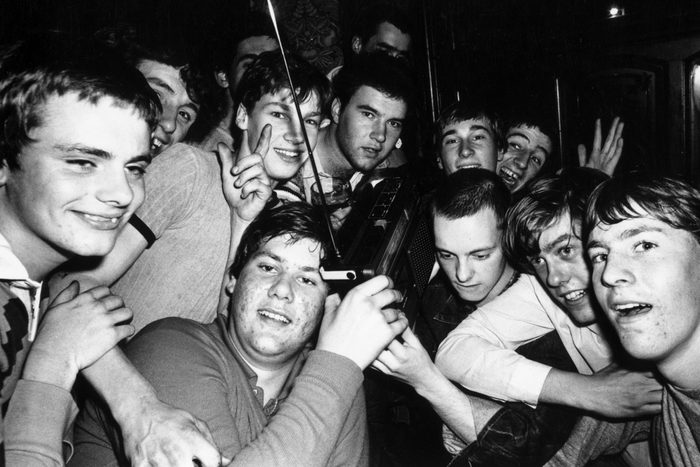
Football on the radio
Approximately 32,000 people watched Princeton do battle with the University of Chicago on the gridiron on October 28, 1922, but many more listened on radio. This game was the first U.S. coast-to-coast radio broadcast of a collegiate football game.

Spartak Moscow
The most successful professional football club in Russian history—with 12 Soviet titles and ten Russian championships—was founded on April 18, 1922, as part of a larger sports society called Moscow Sport Circle. While Spartak Moscow may not be considered a soccer powerhouse like Manchester City, Liverpool, or FC Barcelona, the club has reached the semi-finals of all three UEFA European competitions—the Champions League, Europa League, and European Cup—in its illustrious history. By the way, this is why Americans say “soccer” instead of “football.”

The BYU Cougars football team
Winners of 23 conference titles and a lone national championship in 1984, the Brigham Young University (BYU) Cougars began playing collegiate football in 1922. Considered one of the more successful college football teams of a relatively small, non–”power conference” school, the team’s all-time record is 596–429–27 through the 2021 season. The most famous BYU Cougars include Hall of Famer Steve Young, Jim McMahon, and Todd Christensen.
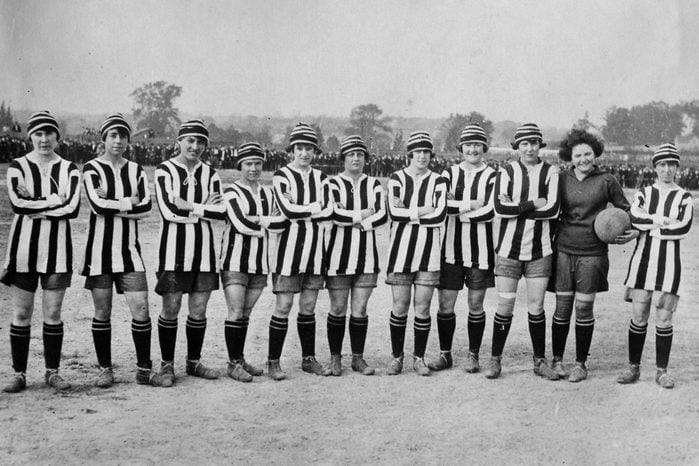
The first professional women’s soccer team in America
If you thought that women’s soccer in the United States started with Megan Rapinoe, Rose Lavelle, and the rest of the 2019 World Cup champions, you’re missing more than 100 years of history and the story of some remarkable female trailblazers. The Dick, Kerr Ladies arrived in North America from Britain in 1922 after the FA (England’s Football Association, the sport’s governing body) banned member clubs from allowing women’s teams to play in its stadiums. This team of female footballers, which was originally formed to help raise money for wounded soldiers during World War I, drew crowds of more than 50,000 in England and would go on to be honored as the most successful women’s team of all time, according to the BBC.

Vanderbilt Stadium
The first stadium in the South built exclusively for college football began with a 0–0 tie against the University of Michigan. The game was played “in a carnival-like atmosphere, with the game ball being dropped from an airplane,” per Vanderbilt’s official history.
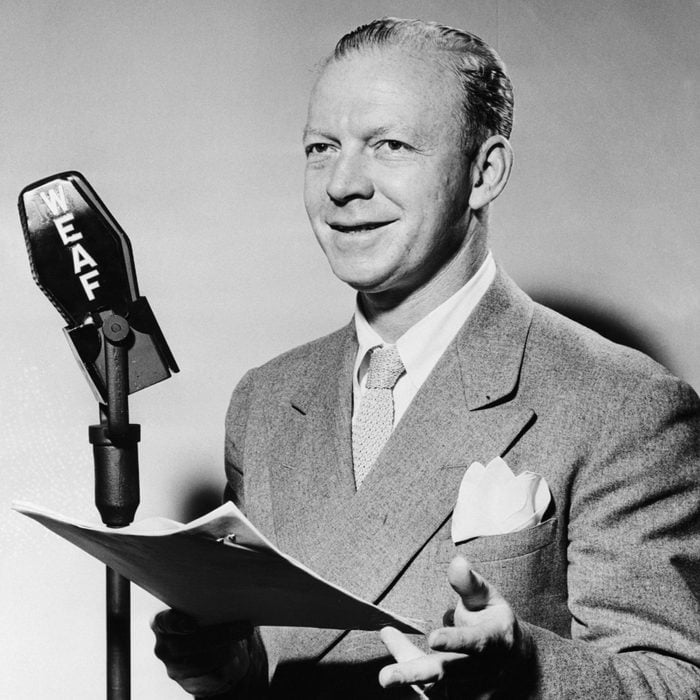
WFAN
What is now the legendary sports radio station in New York began broadcasting in 1922 as WEAF. The flagship station of the NBC Radio Network, it aired a variety of acts, news broadcasts, singers, and humorists on 660 on the AM dial. Many decades later, in 1987, WFAN was the first radio station to move to an all-sports talk format.

Slalom skiing
While the rules for modern slalom skiing were developed by Arnold Lunn in 1922, it wasn’t until 1931 that the first race was run on the slopes of Murren, Switzerland. Slalom skiing was eventually added to the Olympic Winter Games in 1936, held in Garmisch-Partenkirchen in southern Germany. While it’s hard to imagine the Winter Games without slalom skiing, these Olympic moments truly changed history.
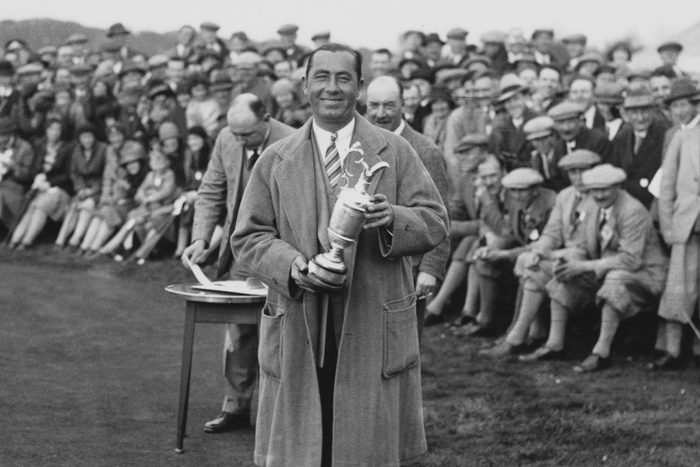
An American win at the British Open
At the Royal St. George’s Golf Club in Sandwich, England, in 1922, Walter Hagen became the first American-born winner of the Open Championship, also called the British Open, the oldest golf tournament in the world. The title was the first of Hagen’s four British Open victories. For American golfers, only Tom Watson, with five Open victories, has won the prestigious tournament more than Hagen. Jack Nicklaus, Tiger Woods, and the amateur Bobby Jones each lifted the famous Claret Jug three times.
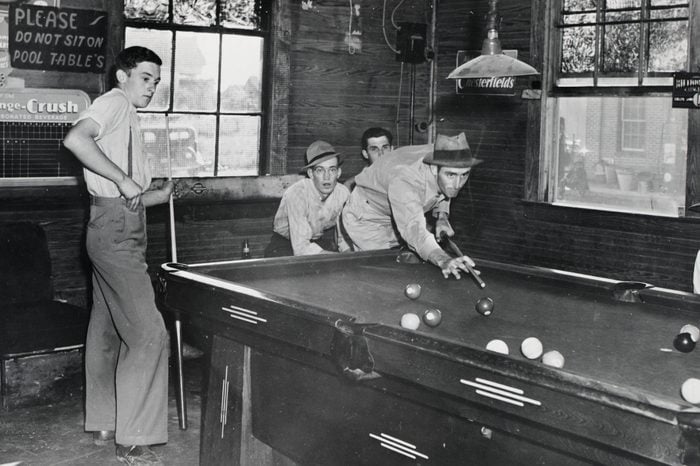
Billiards in New York City
On September 1, 1922, New York City law required all “pool” rooms to change their name to “billiards.” The reasons for this 1922 law are murky, and today, the rule longer applies. In fact, the official NYC Business site states that “a Pool or Billiard Room License is required for any business that will have three or more pool, billiard or pocket billiard tables, for customer use on the premises,” showing that either pool or billiards is acceptable today.

Stan Lee
The beloved creator of the Marvel Comics universe and some of our favorite action movies was born in 1922. Lee gave the world Spider-Man, Thor, Iron Man, Black Panther, and the rest of the Avengers, as well as the X-Men and countless other comic book characters over much of the 20th and early 21st centuries. He died in 2018 and left us all behind with his inspirational quotes.
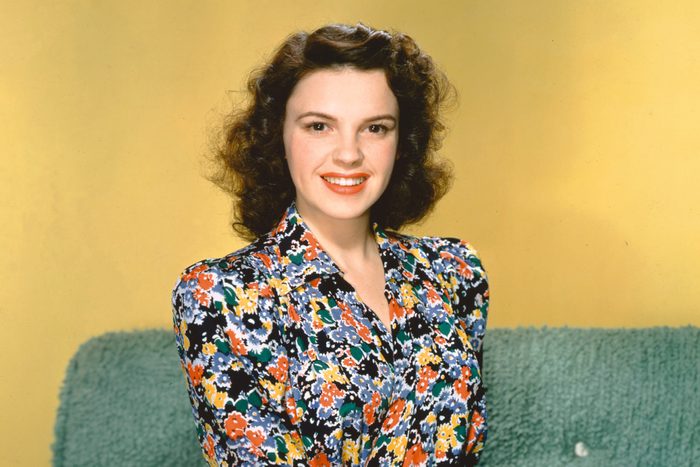
Judy Garland
Born in Duluth, Minnesota, in 1922 as Frances Ethel Gumm, Judy Garland landed an MGM contract at age 13. Just four years later, she became famous as Dorothy in The Wizard of Oz. Though she also starred in a number of other movies, including Meet Me in St. Louis and A Star Is Born, Garland “spent more time as a singer than an actress” before her accidental overdose in 1969, according to Biography.com.
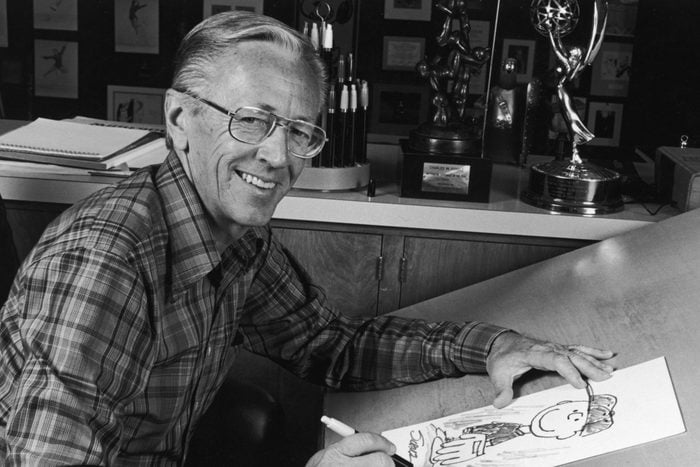
Charles Schulz
Everyone knows that Charles Schulz gave the world Snoopy, Charlie Brown, Lucy, Linus, Peppermint Patty, and the rest of the Peanuts gang, but fewer people know that Schulz was inducted into the Figure Skating Hall of Fame in 2007. This was a posthumous thank you for incorporating the sport into at least 70 of his comic strips. The famous cartoonist, who produced 18,000 comic strips over his 50-year career, was born in November 1922 and passed away on February 12, 2000, the night before his final Peanuts cartoon was published.
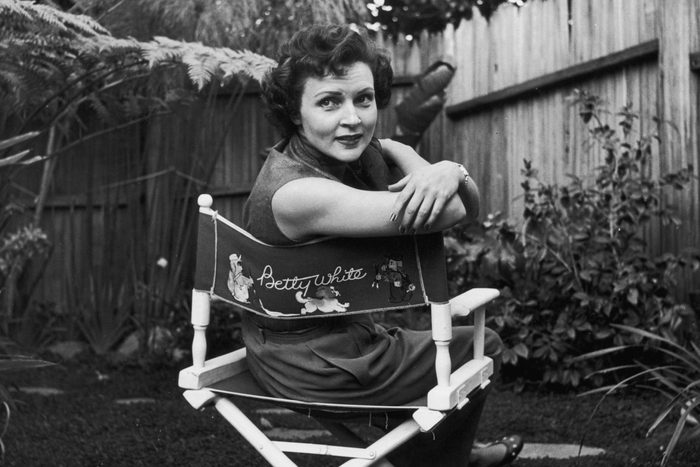
Betty White
One of our national treasures, Betty White, would have turned 100 in 2022, but sadly, she passed away on December 31, 2021, just weeks before her big birthday. Her entertainment career spanned more than eight decades, from star turns on The Mary Tyler Moore Show and The Golden Girls to more recent roles in Hot in Cleveland and The Proposal. If you’re a Golden Girls fan (and who isn’t?), you might be surprised to learn that this beloved ’80s TV show was almost very different: White was actually first offered the role of Blanche but took the role of Rose instead. With five Emmys in her trophy cabinet, White holds the Guinness World Record for Longest TV Career for a female entertainer.
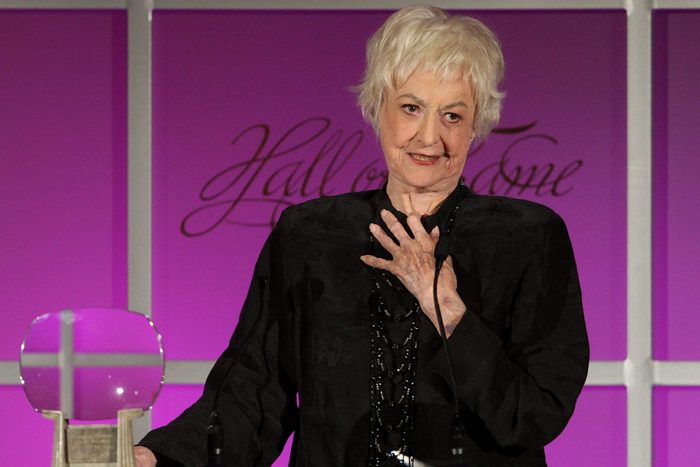
Bea Arthur
Betty White’s fellow Golden Girl was also born in 1922. Originally known as Bernice Frankel, she eventually joined the U.S. Marine Corps and was honorably discharged in 1945. Having reached the rank of Staff Sergeant before leaving the service, “her discharge paperwork indicated her desire to attend dramatics school, setting her on a path to the stage and screen,” notes the National WWII Museum. Arthur died in 2009. Here are more famous people you didn’t know were veterans.
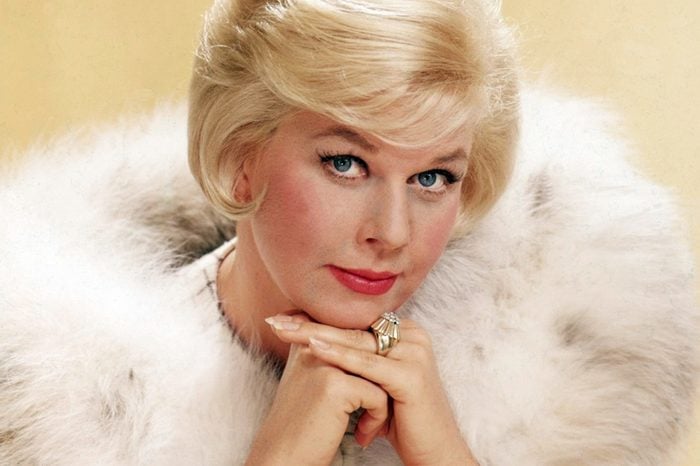
Doris Day
Doris Mary Ann von Kappelhoff was born on April 3, 1922, in Cincinnati, Ohio. When her ambitions to become a dancer were literally crushed in a car accident, she “gained a vocal education by listening to the radio [and] becoming a fan of Ella Fitzgerald” while recovering from her leg injuries, according to DorisDay.com. Her mother then encouraged her to take professional singing lessons. Some of Day’s most iconic films include Calamity Jane, The Man Who Knew Too Much, and Pillow Talk, opposite Rock Hudson.

Kurt Vonnegut Jr.
Born in Indianapolis in 1922, Kurt Vonnegut Jr. wrote one of the most iconic books of our time, Slaughterhouse-Five, and used his hometown as a symbol of American values in a number of his works. According to his official biography, he joined the army at age 20 and, shortly after, was captured by the Germans at the Battle of the Bulge during World War II; he was a POW until the Dresden bombings in 1945. This experience influenced his work, and in fact, his Slaughterhouse-Five protagonist, Billy Pilgrim, also survives capture and the Dresden bombings. Take a look at this letter that Kurt Vonnegut wrote to a bunch of high school students in 2006.
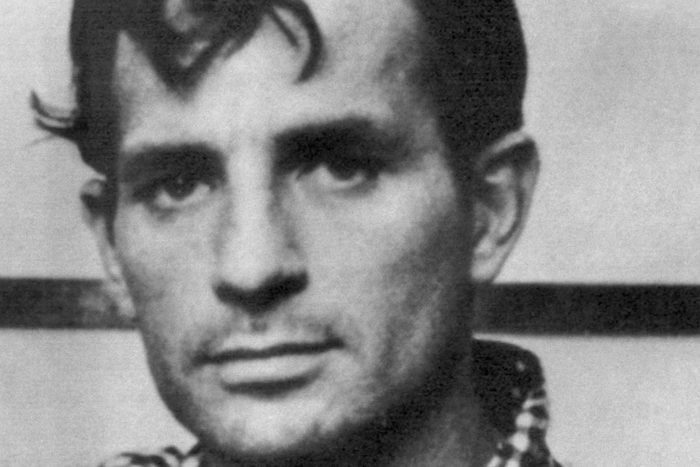
Jack Kerouac
One of the leading novelists and poets of the Beat Generation, Jack was born Jean-Louis Kerouac and spoke French-Canadian before English. Kerouac’s most famous work, On the Road, was “presented to his editor on a single, unbroken roll of paper,” per the author’s official bio. The manuscript was initially rejected but was finally published six years later, in 1957. Don’t miss these other classic books everyone should read at least once.
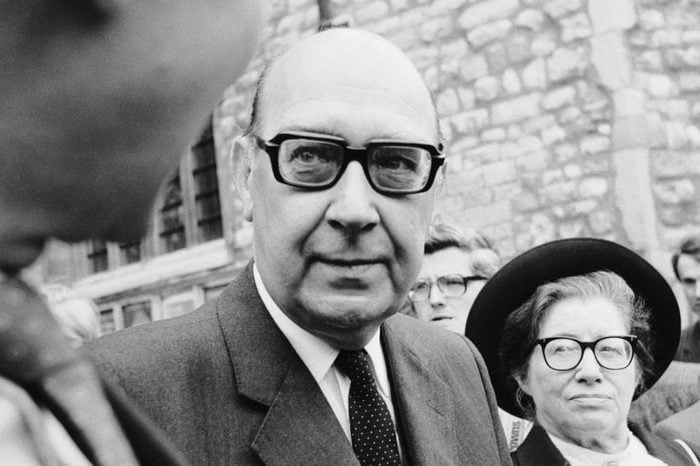
Philip Larkin
One of England’s most famous post-war poets, Philip Larkin was born in 1922. Known as “England’s other Poet Laureate” until he died in 1985, Larkin was considered for the post when it became vacant the year before his death, but he preferred to maintain his privacy, according to the Poetry Foundation. Publishing just 100 pages of poetry spread out over four slim collections and released nearly a decade apart, Larkin didn’t need a huge body of work to make huge impact on the literary community. His final short poem, “The Mower,” remains as relevant as ever: “We must be careful of each other, we must be kind, while there is still time.”

Charles Mingus
Famously known as an avant-garde jazz bassist and one of the most important figures in American music history, Charles Mingus was also an accomplished pianist, bandleader, and composer. In his 20s, Mingus toured with the likes of Louis Armstrong before eventually recording with Charlie Parker, Miles Davis, and Duke Ellington in New York City in the 1950s. He died in 1979.

Jack Klugman
Best known as the slobbish sportswriter Oscar Madison in one of the best sitcoms of all time, The Odd Couple, Jack Klugman was born in South Philly in April 1922 and would have been turning 100 in 2022 had he not died on Christmas Eve 2012 at the age of 90. During his early theater days in the late ’40s and early ’50s, he was roommates with Charles Bronson and made ends meet by selling blood for $5 a pint, per The Guardian.
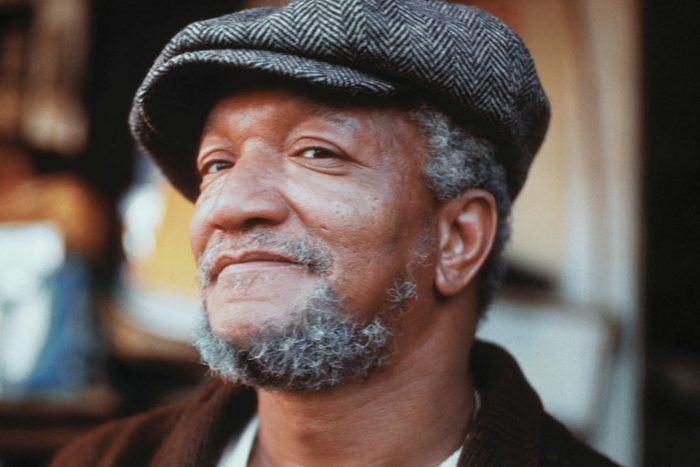
Redd Foxx
Born as John Elroy Sanford on December 9, 1922, the comedian most people know as Fred G. Sanford from Sanford and Son “broke new ground for minorities and comedians alike. By joking about everything from sex to color barriers, he brought simmering and taboo issues into the open,” notes the official Redd Foxx website. Foxx, known for his famous “You big dummy” line from the iconic TV show, died in October 1991 at the age of 68.
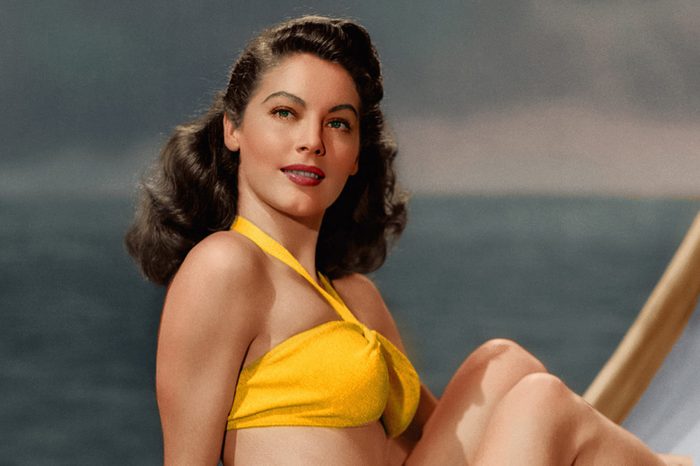
Ava Gardner
The epitome of old-school Hollywood glamour, Ava Gardner was born in 1922 in Grabtown, North Carolina. Five years after arriving in Hollywood with an MGM contract and playing bit parts in more than a dozen films, she hit it big with The Killers and then went on to star in movies including Show Boat and The Barefoot Contessa. Dubiously promoted as “The World’s Most Beautiful Animal” by MGM, she was also a tabloid darling, since she was married three times—to Frank Sinatra, Artie Shaw, and Mickey Rooney. She died in 1990.
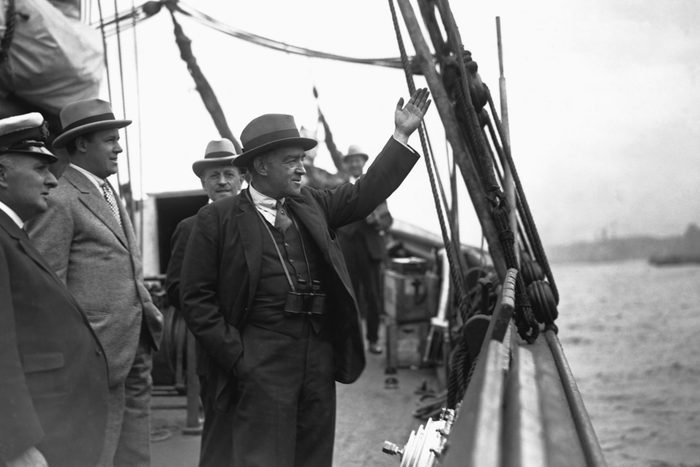
The death of Sir Ernest Shackleton
For his fourth and final expedition, Shackleton had aimed to circumnavigate the Antarctic continent. But on January 5, 1922, before reaching the mainland to begin his journey in earnest, the great explorer died of a heart attack while anchored off the coast of South Georgia, an island in Antarctica, and was buried there, per the BBC.
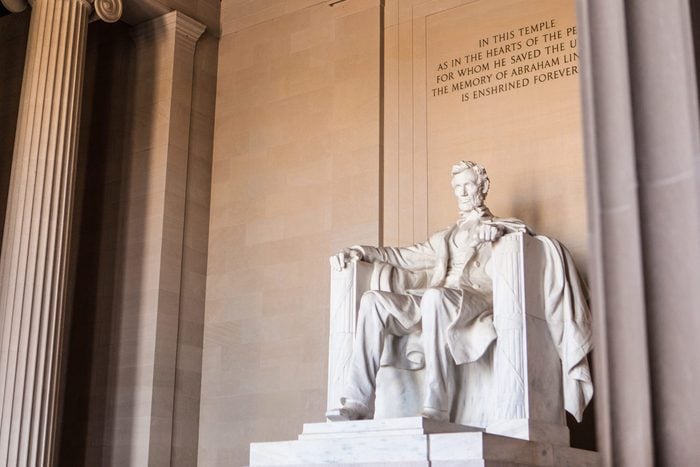
The Lincoln Memorial
After eight years of construction, the stately Lincoln Memorial in Washington, D.C., was dedicated in May 1922. The ceremony was officiated by former U.S. president and chief justice of the Supreme Court William Howard Taft, with Robert Todd Lincoln (Abraham Lincoln’s son), Robert Morton (the president of the Tuskegee Institute), President Warren G. Harding, and Vice President Calvin Coolidge in attendance. Today, millions of people visit the 19-foot Honest Abe statue, seated and looking out over the reflecting pool and the Washington Monument on the National Mall, each year. The Lincoln Memorial is one of the famous monuments hiding little-known secrets.
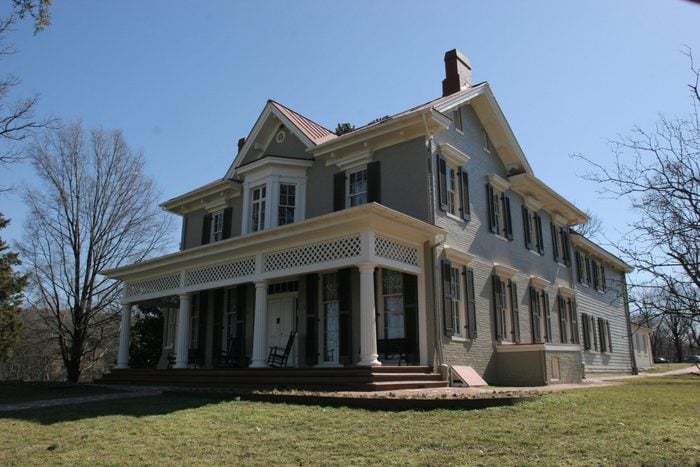
Frederick Douglass’ home
The D.C. home of famed abolitionist and author Frederick Douglass became a historic site on August 12, 1922. Douglass purchased the house, which he named Cedar Hill, and the nearly ten-acre property in 1877 for $6,700 (roughly $165,000 in today’s money) and moved in the following year. He lived there until his death in 1895.
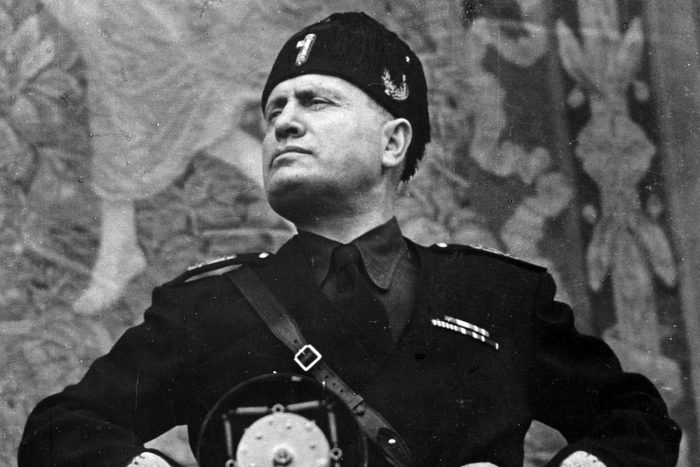
Mussolini and the National Fascist Party
Benito Mussolini and the National Fascist Party came to power in Italy after the March to Rome in October 1922. According to Encyclopedia Britannica, “widespread social discontent, aggravated by middle-class fear of a socialist revolution and by disappointment over Italy’s meager gains from the peace settlement after World War I,” made the conditions favorable for Mussolini’s rise. Are you a history buff? See how many of these history trivia questions you can get right.
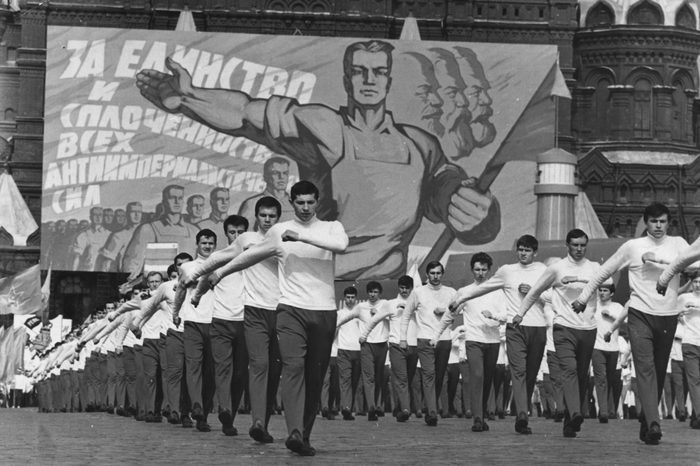
The USSR
The new communist state, the Union of Soviet Socialist Republics (USSR), “was the successor to the Russian Empire and the first country in the world to be based on Marxist socialism,” per History.com. Here’s a quick recap of what happened: Vladimir Lenin, the head of the Bolshevik Party, rose to prominence during the Russian Revolution of 1917, which brought about the end of the Romanov dynasty’s imperial rule in Russia. The Bolsheviks then became the Communist Party, and in 1922, Lenin took charge of both the party and the new Soviet Union.

Egyptian independence
England proclaimed a protectorate over Egypt in 1914 and remained in control of the country until Egypt became an independent state in 1922. According to Britannica, though, the British government still had a say in certain matters, including “the security of imperial communications, defense, [and] the protection of foreign interests and of minorities.” Plus, the English and French retained control of the vitally important Suez Canal until 1956.

The USS Langley
The U.S. Navy’s first aircraft carrier was commissioned in March 1922, but for two years, “Langley served as a veritable laboratory for both the study of how to operate aircraft from a moving ship and the development of vital equipment like arresting gear,” per the National Naval Aviation Museum. In November 1924, the ship was finally ready to join the U.S. naval fleet. Did you know that the term “feeling blue” originated in the Navy? Check out these other words and phrases that also originated in the military.

Joseph Stalin’s rise to power
In 1922, Stalin was appointed General Secretary of the Russian Communist Party by an ailing Vladimir Lenin, a move that allowed Stalin to build his base of support within the government by appointing allies to key roles, according to History.com. Later in the ’20s, those followers would help Stalin become the dictator of the Soviet Union.
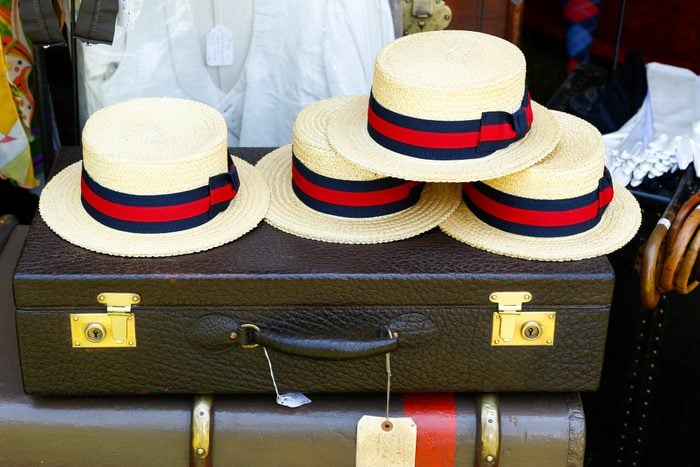
The Straw Hat Riot
One of the stranger riots in American history began in September 1922 in New York City, as people protested the right to wear straw hats beyond the socially accepted end date of September 15—and things turned violent. According to Ripley’s, “teen boys roamed the streets with large sticks, some with nails protruding on the ends to help hook the straw hats off people’s heads. Anyone who resisted was beaten, and several men had to be treated for their injuries.” There was no emphatic resolution to the riots, but after them, society became more relaxed about such fashion choices, and a few years later, America entered the Great Depression, rendering such petty headwear issues rather unimportant.
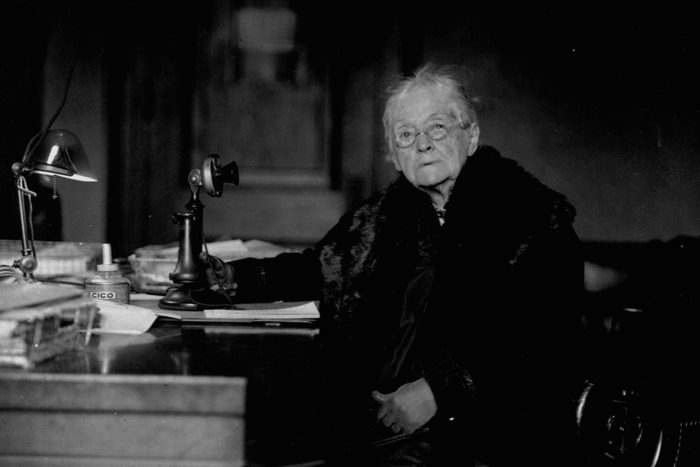
The first female senator
Women were granted the right to vote only two years earlier, but in 1922, 87-year-old Rebecca Felton of Georgia became the first woman to serve in the U.S. Senate. She was appointed by Governor Hardwick after Thomas E. Watson died. But it was a calculated move by the governor, who was looking to gain favor with female voters in the next election. It didn’t work; the suffragettes saw through his ploy and he lost in the primary. As for Felton, she was appointed in early October but not sworn in until late November, at which point she technically served as a senator for just 24 hours.
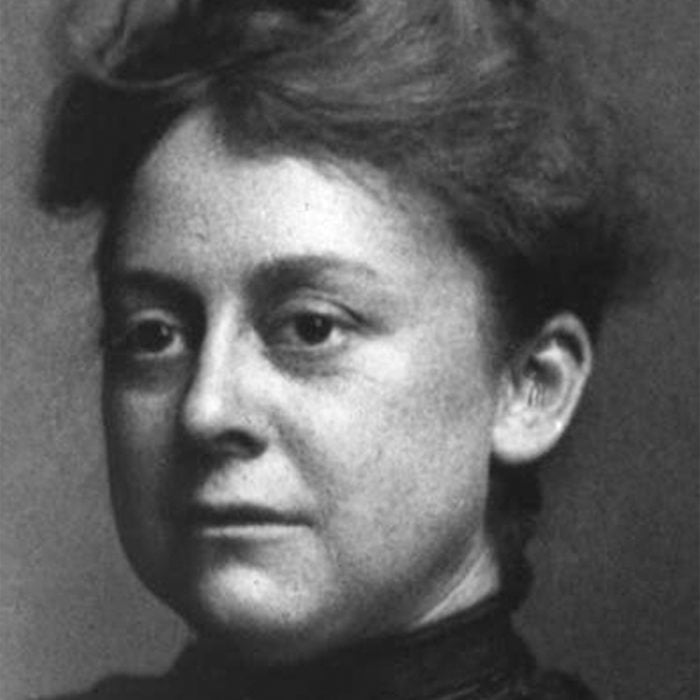
The first female FBI agent
How hasn’t a movie been made about this? In 1922, Alaska Davidson became the FBI’s first female special agent. She worked on the Mann Act, aka the White-Slave Traffic Act, which “made it illegal to transport women over state lines ‘for the purpose of prostitution or debauchery, or for any other immoral purpose,'” according to Mental Floss. Unfortunately, just two years later, newly appointed FBI director J. Edgar Hoover requested her resignation, along with that of another female agent who had been hired after Davidson; a third agent, Lenore Houston, stayed on until 1928. After that, a woman didn’t work as a special agent in the FBI again until 1972, when the Equal Employment Opportunity Act was passed.

The Republic of Turkey
Think back to your high school history class and you’ll remember learning about the Ottoman Empire. Incredibly powerful and influential, especially in the 15th and 16th centuries, it spanned more than 600 years until it came to an end in 1922, with a victory by the Turkish National Movement in the war of independence and the elimination of the title of Ottoman Sultan. The following year, Turkey became a republic, and Kemal Atatürk became its first president; he made the government secular and more Westernized. Did you know that Turkey is home to the only city in the world that straddles two continents?
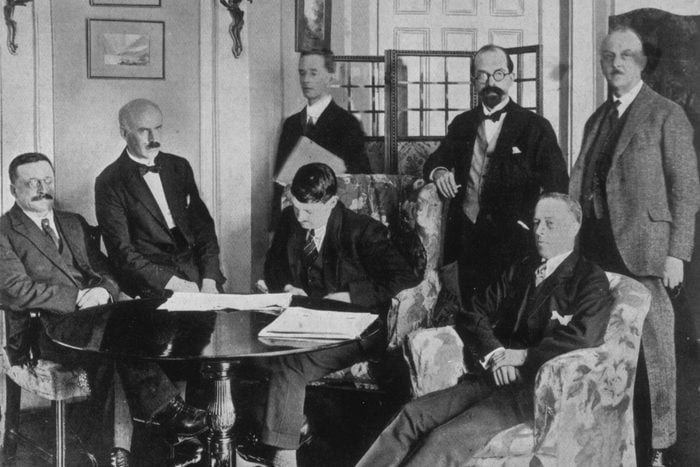
The Irish Free State
The English had ruled over Ireland since the 12th century, and there had been many years of discord, which included religious differences and the Potato Famine in the mid–19th century. But the tension reached a boiling point in 1916 with the Easter Uprising. While the British quickly put an end to that rebellion, the event stirred up the people’s desire for independence, resulting in fighting for the next six years. In 1922, a peace treaty was signed between a faction of Irish nationalists and Britain that called for Ireland to be partitioned; the south became autonomous, while the six northern counties remained in the United Kingdom.
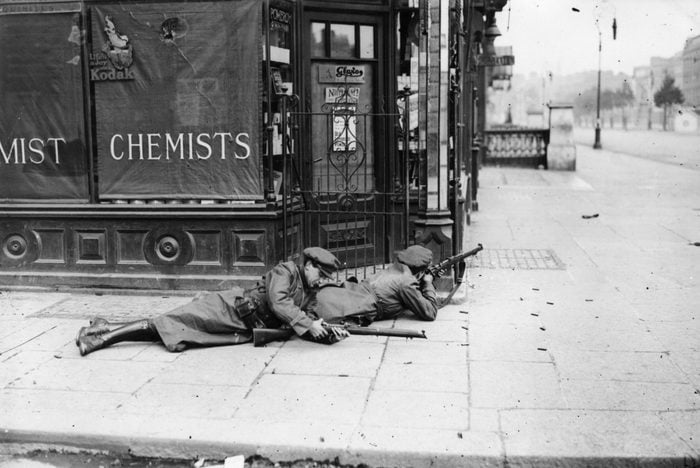
The Irish Civil War
Tensions over the peace treaty that formed the Irish Free State came to a head later in 1922, as civil war began after a split in the ranks of the IRA (Irish Republican Army). Half supported the treaty, while the other half opposed it and took paramilitary action against the new government. The war raged on officially for nearly a year, although tensions between the south and Northern Ireland lasted for decades, including “the Troubles” from 1968 to 1998.
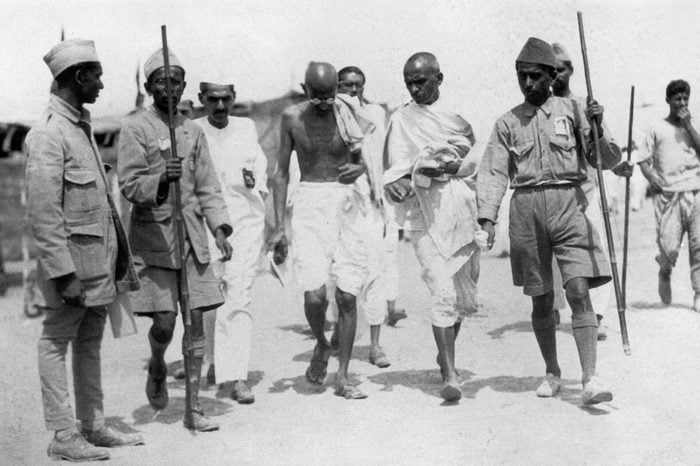
Gandhi’s longest imprisonment
On March 10, 1922, Gandhi was arrested by the British police on charges of sedition. His crimes? Writing three “politically sensitive” articles in his journal Young India, for which he was charged with “tampering with loyalty,” “shaking the manes,” and an “attempt to excite disaffection towards the British government.” While Gandhi was arrested many times, this jail term was his longest sentence and imprisonment. (He was sentenced to six years, but he only served two.) Also of note: While jailed, Gandhi wrote the first part of his autobiography, The Story of My Experiments with Truth. For more enlightening reads, choose from our list of the best autobiographies of all time.
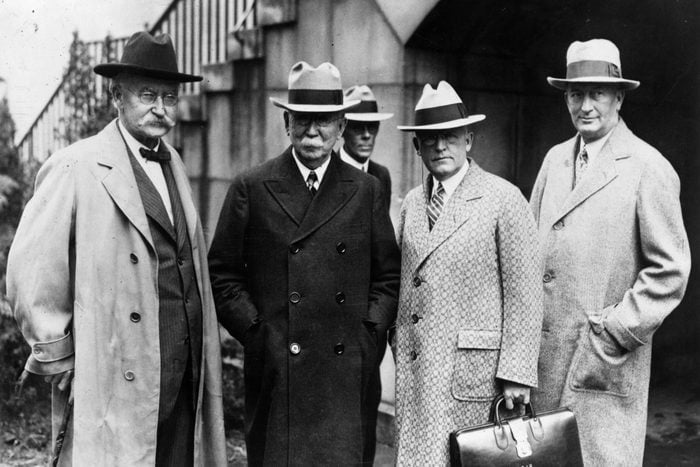
The Teapot Dome scandal
The most serious scandal in American history before Watergate occurred in 1922. The Teapot Dome scandal, according to the Wyoming State Historical Society, involved “national security, big oil companies, and bribery and corruption at the highest levels of the government.” In 1921, President Harding transferred supervision of the naval oil-reserve lands from the U.S. Navy to the Department of the Interior, and the following year, Secretary of the Interior Albert Bacon Fall took a $100,000 bribe to secretly grant Mammoth Oil Company exclusive rights to the Teapot Dome oil reserves. Fall was the only cabinet officer ever to be found guilty of a crime, notes UVA’s Miller Center.
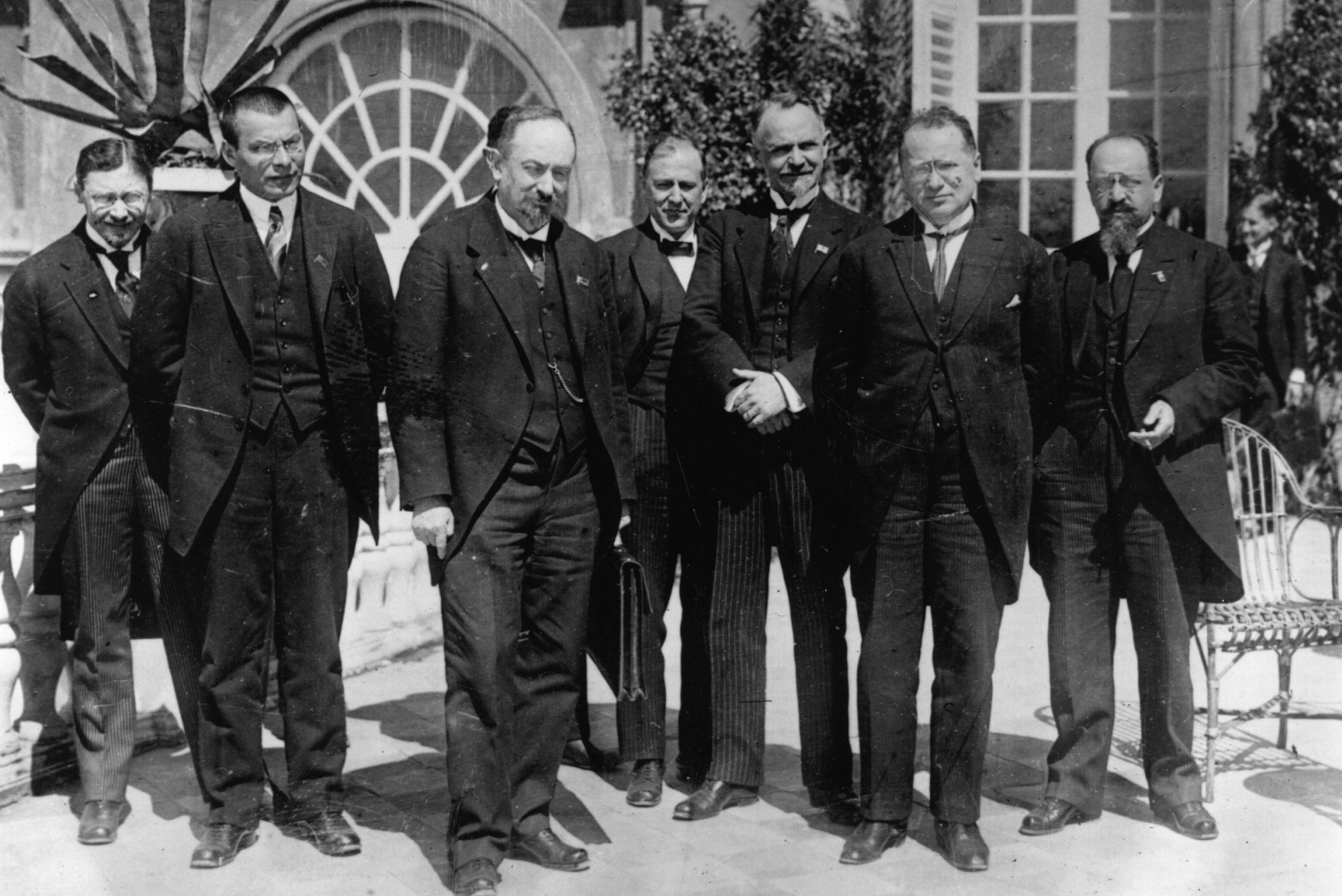
The Genoa Conference
The end of a war doesn’t mean the end of problems. Four years after World War I officially ended, 29 nations met in Genoa, Italy, to figure out issues related to restructuring, the economy, and the reintegration of the Soviet Union and Germany into European life. The United States declined to attend, and the meeting was largely unsuccessful, with neither side being able to reach an agreement. For a more detailed look at the past, listen to these history podcasts.
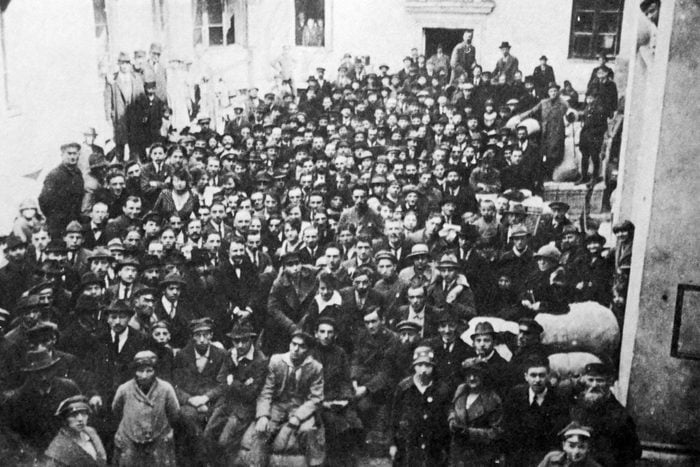
The resolution to create Israel
In 1922, the United States, under President Harding, and the League of Nations signed a joint resolution to formally recognize the “historical connection of the Jewish people with Palestine” and the “grounds for reconstituting their national home in that country.” While 1922 marked the approval to create a Jewish homeland in Palestine, the British remained in control of the area until May 1948, when Israel was officially declared an independent state.

Langham Hotel
This building is now a national architectural landmark that houses the five-star Langham Hotel, but in 1922, it opened its doors as the original Federal Reserve Bank of Boston. The historic structure only became a hotel in 1981 and spent much of 2020 undergoing a significant redesign and restoration to return it to its former glory. Take an Atlantic Coast road trip and make sure to stop here when you’re in Massachusetts.
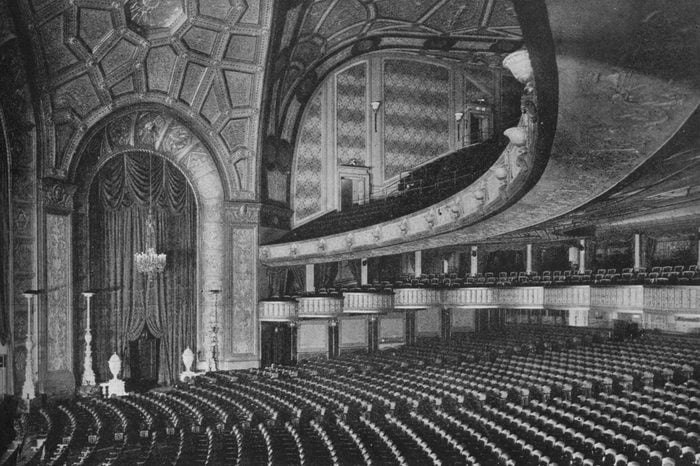
The Detroit Opera House
Now known as the Detroit Opera House, this cultural mecca was originally called the Capitol Theater when it opened on January 12, 1922. At the time, the 4,250-seat theater claimed to be the fifth largest in the world.
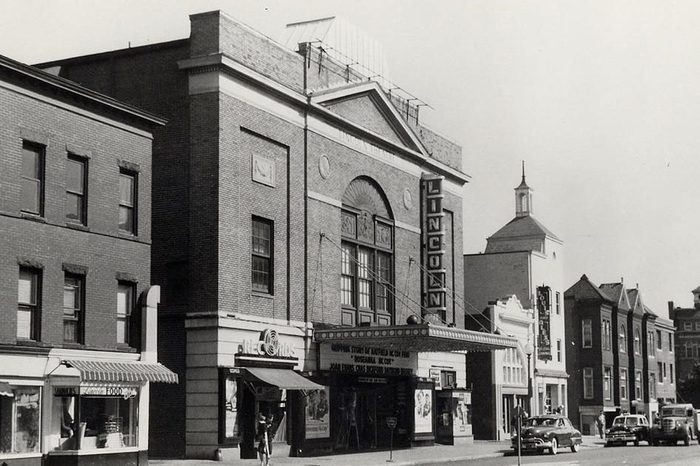
The Lincoln Theatre
This theater, located on Washington, D.C.’s “Black Broadway,” served the area’s African American community when segregation kept them out of other venues. According to the theater’s official website, the space “predated and influenced” the Harlem Renaissance and regularly hosted many of the great names of entertainment, including Duke Ellington, Pearl Bailey, Ella Fitzgerald, Billie Holliday, Nat King Cole, and Louis Armstrong. While you certainly know those famous names, chances are you didn’t learn about these other incredible Black Americans in history class.
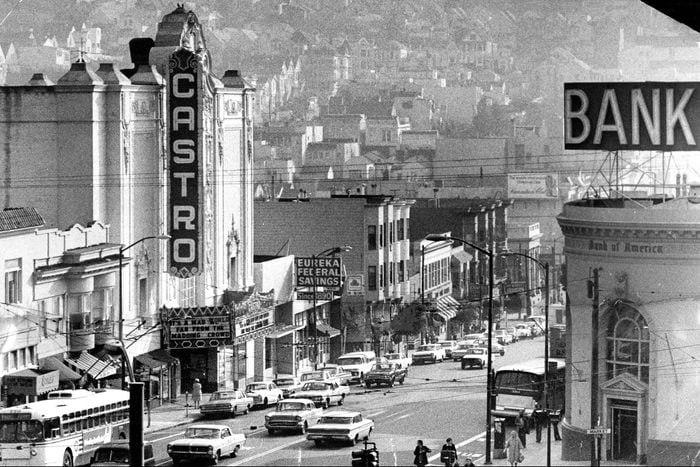
The Castro Theatre
Founded by the already-successful Nasser Brothers, one of the oldest movie-business families in San Francisco, the 1,875-seat Castro Theatre opened its doors on June 22, 1922. The film screened on that special evening was Paramount’s race-car flick Across the Continent.

Schindler House
Considered the first residential house built in the modern style, this 3,500-square-foot home in West Hollywood “incorporated a communal living area and ‘rooftop sleeping baskets’ instead of bedrooms,” per Curbed. It was designed by architect Rudolph Schindler, who worked under Frank Lloyd Wright in the 1910s. According to the MAK Center for Art and Architecture, “the house was conceived as an experiment in communal living to be shared by Schindler and his wife Pauline with another couple, Clyde and Marian Chace.”
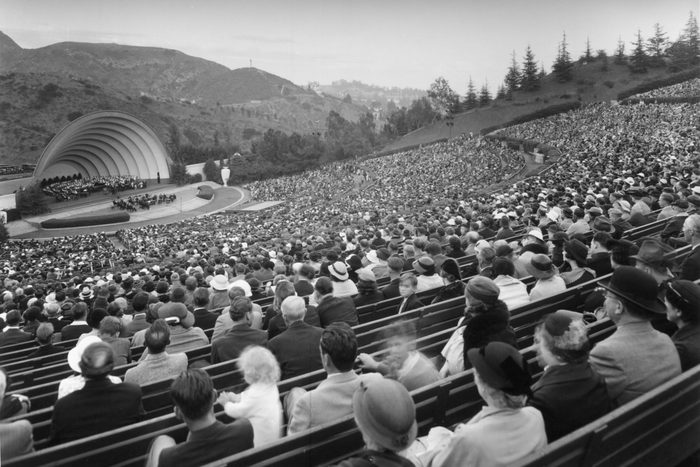
The Hollywood Bowl
The first concert season of what we now call the Hollywood Bowl took place in 1922. Its first stage was “a simple wooden platform with a canvas top,” and “patrons [sat] on movable wooden benches.” This legendary Los Angeles performance space came to be after the Theatre Arts Alliance purchased 59 acres in Bolton Canyon for $47,500 (roughly $731,000 in today’s money). Today, Los Angeles is one of the best American cities for music.
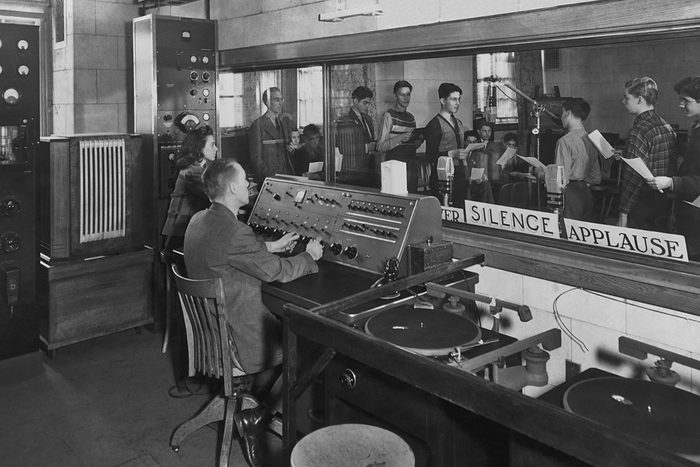
Brooklyn Technical High School
Long before the term “STEM education” easily rolled off the tongues of American parents, the nation’s largest specialized public high school for science, technology, engineering, and math education opened its doors in 1922. The brainchild of Dr. Albert Colston, Brooklyn Tech’s goal was to be “a school with parallel paths leading either to college or to a technical career in industry,” according to its official history. It is now one of the most prestigious and selective public high schools in the United States.
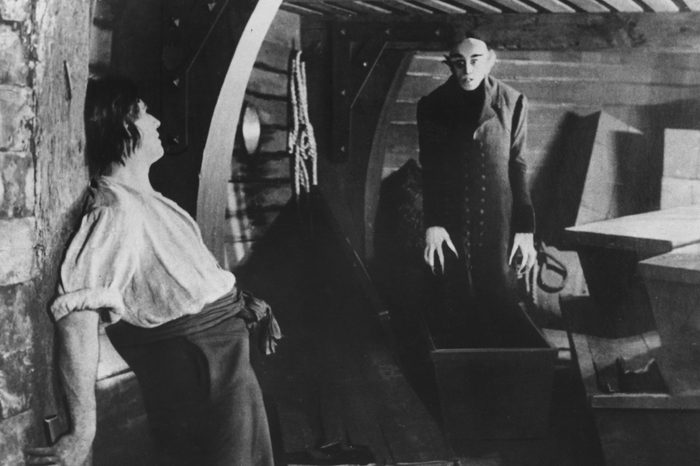
Nosferatu
Long before Twilight, there was Nosferatu. This adaptation of Bram Stoker’s Dracula was the world’s first vampire film, and it premiered in Berlin in 1922. “One of the silent era’s most influential masterpieces, Nosferatu‘s eerie, Gothic feel—and a chilling performance from Max Schreck as the vampire—set the template for the horror films that followed,” according to Rotten Tomatoes. It would be another seven years, however, before American audiences would be able to sit in a dark theater and be terrified by this film. In 100 years, there have been many cinematic thrills and chills, but these are the scariest movies of all time.
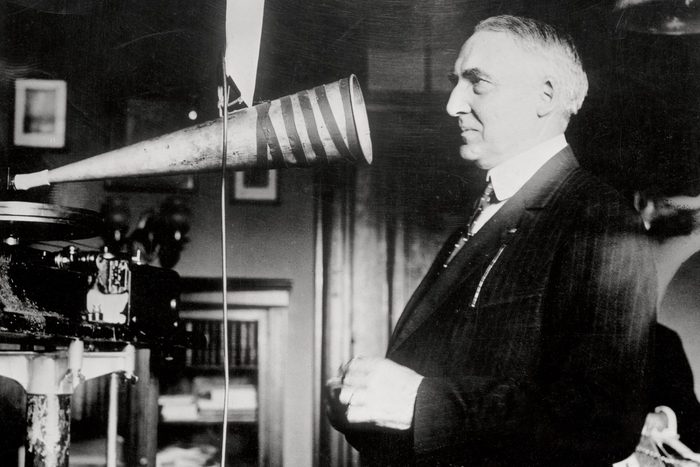
A radio in the White House
While Twitter has been an essential source of communication in recent presidencies, radio was the cutting-edge technology in 1922. And on February 8 of that year, President Harding had a radio installed in the White House. It wasn’t until two years later, however, that the first president broadcast from the White House. That distinction went to Harding’s successor, Calvin Coolidge, when he addressed the nation on Washington’s birthday and was heard on 42 stations around the country.
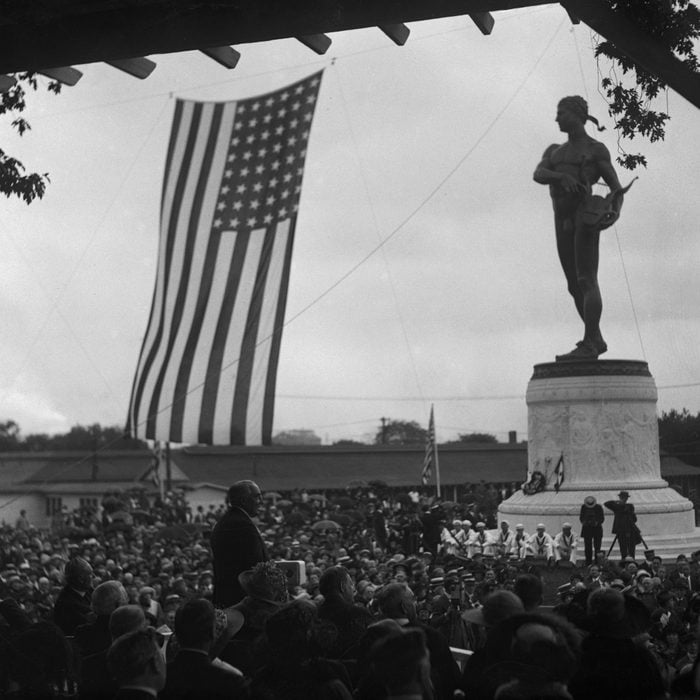
The first president heard on the radio
President Harding earns another spot on this list as the first president to be heard on the radio. On June 14, 1922, just a few months after he had his fancy new radio installed in the White House, his speech at the dedication of a memorial site for Francis Scott Key was heard over the airwaves. Incidentally, Harding’s election win in 1920 was the first one ever announced live on the air. Here are more presidential firsts you never knew about.
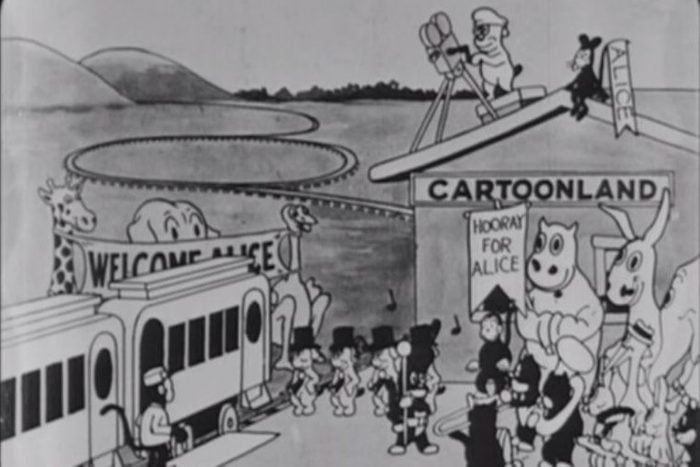
Laugh-O-Gram Films
The beginning of Disney as we know it began way back in 1922, with the start of Walt Disney’s Laugh-O-Gram Films in Kansas City. According to SilentFilm.org, this was Disney’s “after-work” cartooning project with friends, and much like his later iconic productions, the Laugh-O-Grams were a hit. Soon, the 19-year-old Walt was being commissioned to produce animated intermission fillers and coming attractions for Newman Theaters, then decided to create animated fairy tales. The company created seven fairy-tale films in total before experiencing financial problems and before Walt Disney decided to leave the Midwest for California. And the rest, as they say, is history!

The Harlem Renaissance
There is no exact start date to the phenomenon known as the Harlem Renaissance, a period of great growth in the literature, art, social change, and culture in the African American community in New York City’s Harlem. But Claude McKay’s book of poetry Harlem Shadows was published in 1922, and some critics consider it to be the first great literary achievement of the Harlem Renaissance.
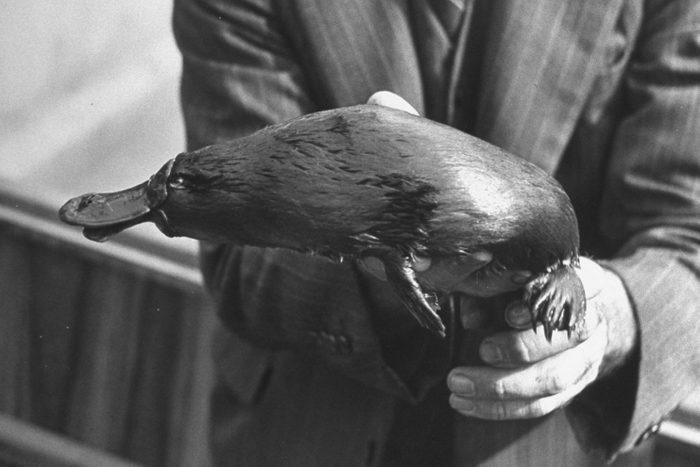
The duck-billed platypus’ U.S. debut
For the first time ever, a duck-billed platypus was publicly exhibited in the United States in 1922. Making its big debut at the Bronx Zoo, the curious Australian creature with the fur of a mammal and beak of a bird was only there for a limited time. Most Americans wouldn’t get to see another one in person until 1947. Did you know that platypuses have spurs on their feet that can release venom? Here are more fascinating facts about animals you probably never knew.

America’s first public bat mitzvah
What is now a widespread American Jewish practice was shocking 100 years ago. Before 1922, there had been no ceremony to mark a girl’s coming of age in the Jewish faith. That changed on March 18 of that year with 12-year-old Judith Kaplan, whose bat mitzvah was the first conducted in the United States, per the Jewish Virtual Library. Judith was the daughter of Rabbi Mordecai Kaplan, the founder of Reconstructionist Judaism, and the ceremony took place in New York City during synagogue services.
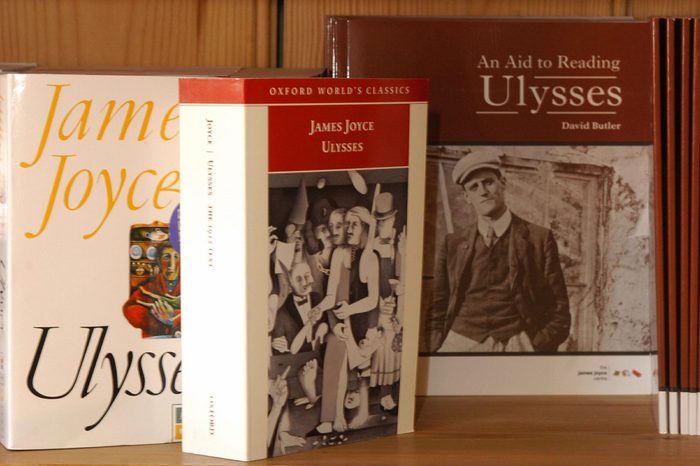
James Joyce’s Ulysses
First published in complete book form by Shakespeare & Company in Paris in 1922, James Joyce’s classic tome—peppered with explicit references to the human body (“the scrotumtightening sea,” for example) and a copious amount of sexual wordplay—helped change how we define obscenity, according to The New Yorker. At the time, U.S. and U.K. customs seized copies of Ulysses, according to the British Library, and “no effort was being spared by government agencies, publishing firms and self-appointed social purity watchdogs to sanitize books of all possible indelicacies.”
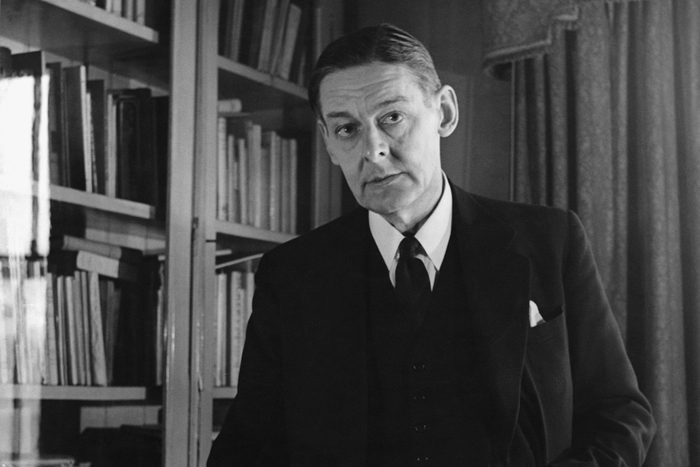
T.S. Eliot’s The Waste Land
The first issue of T.S. Eliot’s quarterly literary magazine, The Criterion, contained Eliot’s poem The Waste Land. Considered to be one of the most vital poetic works of the 20th century, it was published in October 1922. Written after Eliot had a breakdown in 1921, the poem is considered a modern masterpiece that “remains one of the finest reflections on mental illness ever written,” notes The Guardian. Here are more of the best poetry books of all time.

The Velveteen Rabbit
Written by Margery Williams and illustrated by William Nicholson, one of the most cherished children’s books of all time was published in 1922. The original version of The Velveteen Rabbit is still in print for today’s kids to fall in love with.
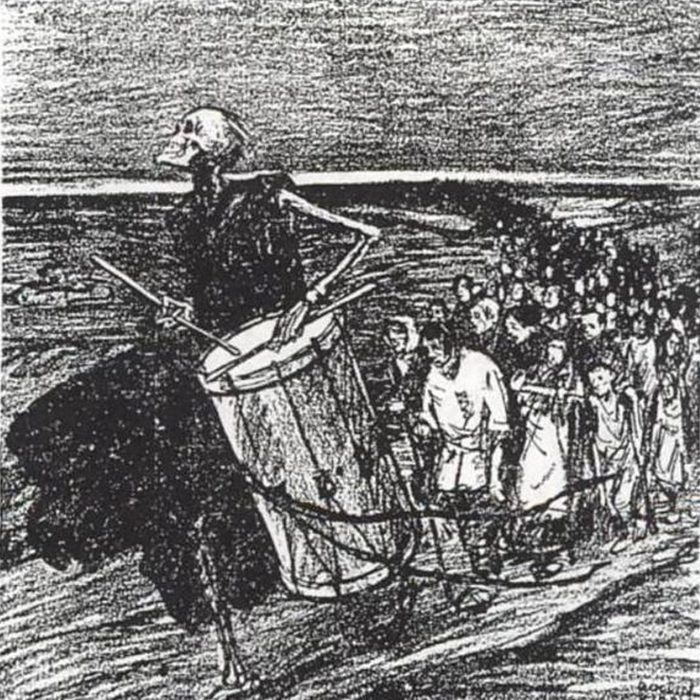
“On the Road to Moscow”
On May 21, 1922, Rollin Kirby won the first Pulitzer Prize ever given to a cartoon. His political cartoon “On the Road to Moscow” was first published by New York World in August of the prior year. “It focuses on the still relatively nebulous threat of Communism to the peoples of the world by picturing Death beating a drum and leading a chained line of people to their demise,” per the Rockwell Center for American Visual Studies. Kirby would go on to collect two more Pulitzer Prizes for editorial cartooning, in 1924 and 1929.

The Castle
Though it was published in 1926, two years after his death, Franz Kafka began working on The Castle in January 1922 at Spindlermühle, a snowy Czech mountain resort. It was ultimately left unfinished due to the author’s untimely death—and in fact, it ends mid-sentence and only saw the light of day because Kafka’s agent defied the writer’s dying wish to burn all of his manuscripts.

The Curious Case of Benjamin Button
F. Scott Fitzgerald’s satirical short story about aging has aged well. Published 90 years before the film adaptation starring Brad Pitt made its way to Hollywood, it first appeared in Collier’s Magazine on May 27, 1922, and was later included in Fitzgerald’s anthology Tales of the Jazz Age. By this time, the author was already a household name; his debut novel, This Side of Paradise, was published in 1920. It would be three more years before The Great Gatsby would debut and become one of the most-read books in American literary history.

The Newbery Medal
The first award for distinguished books for children was awarded by the American Library Association in 1922. The inaugural Newbery Medal went to Hendrik Willem van Loon’s The Story of Mankind. Recent winners of the prestigious award include Kate DiCamillo, Rebecca Stead, Louis Sachar, Lois Lowry, and Madeleine L’Engle (for A Wrinkle in Time, one of the best fantasy books ever written).
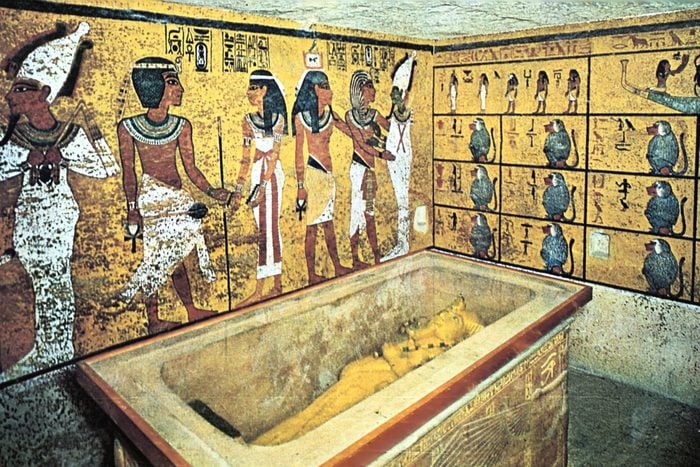
The discovery of King Tut’s tomb
It’s hard to imagine a time when King Tut was lost to history, but his tomb in the Valley of the Kings in Egypt wasn’t discovered until 1922. While British Egyptologist Howard Carter and his wealthy backer, Lord Carnarvon, started exploring the mostly intact chambers in November of that year, it wasn’t until a few months later in February 1923 that they opened the last chamber and found the sarcophagus of the boy king, the burial chamber, and its many treasures—virtually untouched for 3,000 years.

The discovery of vitamins D and E
According to the U.S. National Library of Medicine, “before the twentieth century, it was not possible to describe the essentials of a diet that could support life, growth and reproduction of higher animals.” Both vitamins D and E were discovered in 1922. Vitamin D, which promotes calcium absorption in the gut and enables bone mineralization, was discovered by Edward Mellanby while he was researching rickets. Vitamin E (an important antioxidant) was found in green leafy vegetables by University of California researchers Herbert Evans and Katherine Bishop.
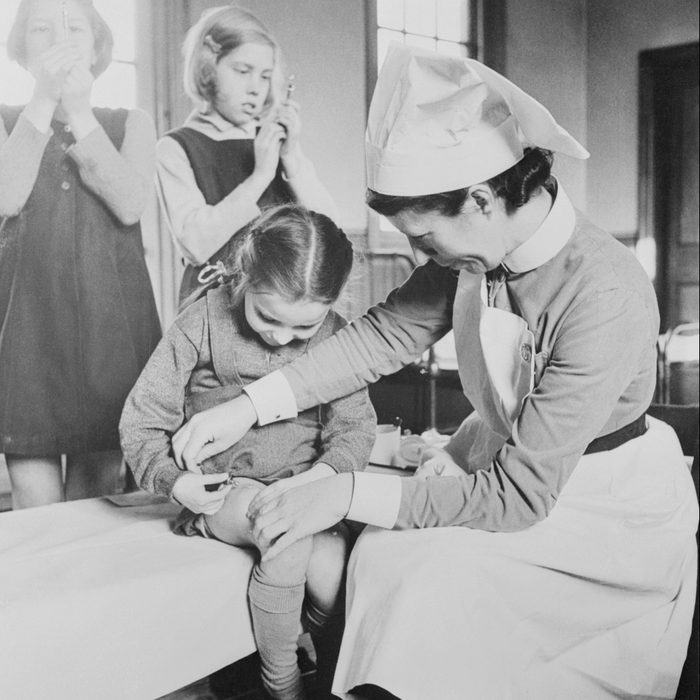
First insulin treatment of diabetes
Insulin was first used in the treatment of diabetes on January 11, 1922. While it had been discovered in 1921, it wasn’t usable until the following year, when it was “purified” by James B. Collip. Before this, those with Type 1 diabetes rarely lived more than a year or two, and today, insulin is still the only effective treatment for people with this condition.
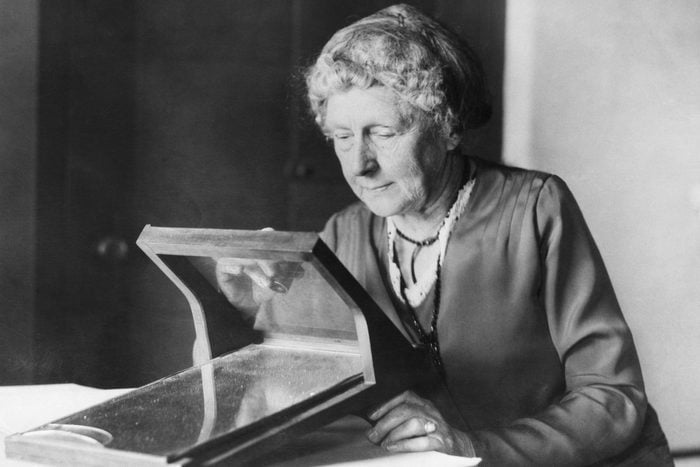
The classification of stars
One of many amazing women squeezed out of mainstream history textbooks, Annie Jump Cannon changed how we think of the universe. Back in 1901, she published her first catalog of stars, which divided stars into seven classes: O, B, A, F, G, K, and M. This was based on the thickness of certain lines in a star’s spectrum and had to do with surface temperature. “Historians estimate that Cannon classified over 35,000 stars herself, just by looking at their spectra,” notes Forbes. “At her peak, she could accurately classify three stars a minute.” It wasn’t until 1922, however, that the International Astronomical Union officially adopted this system, which is still used today.
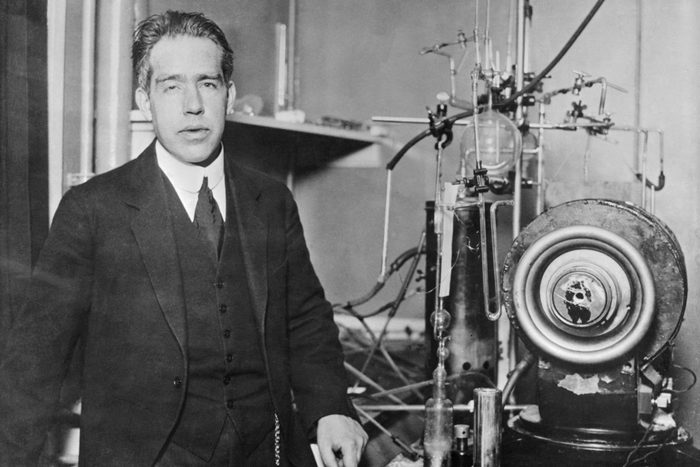
The Nobel Prize for the atomic model
In 1922, Niels Henrik David Bohr won the Nobel Prize in Physics “for his services in the investigation of the structure of atoms and of the radiation emanating from them.” One of Bohr’s major achievements was devising the atomic model, which revealed that an atom is a small, positively charged nucleus surrounded by orbiting electrons. His work also influenced scientists’ understanding of nuclear fission and quantum theory, and the chemical element bohrium is named after him.
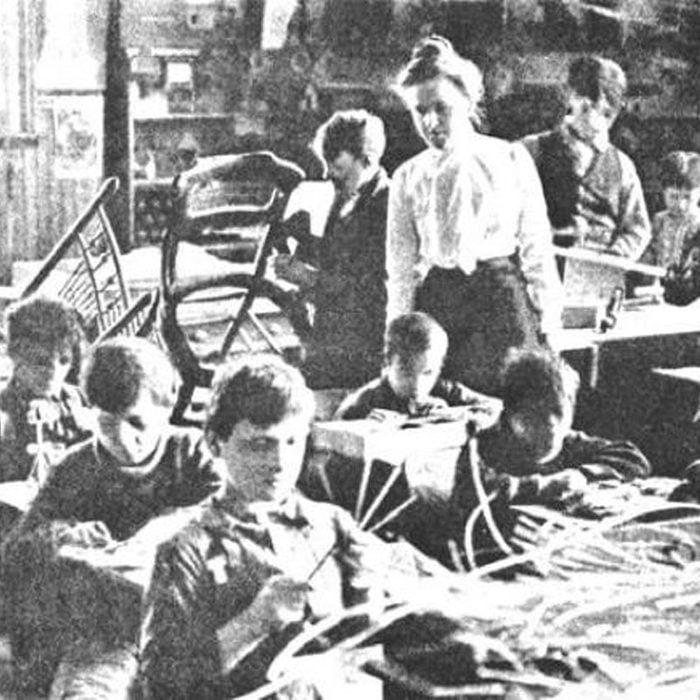
The Council for Exceptional Children
While the Council for Exceptional Children (CEC) sounds like a fictional organization from a popular children’s book series, it is a real organization that has done a lot of good. Founded in 1922, its goal was to have students with gifts, talents, and disabilities reach their full potential. Still in existence today, it has played an integral role in helping children with special needs over the years. In 1975, the CEC made the case to Congress for the Education for All Handicapped Children Act, and in 2004, it helped Congress reauthorize the Disabilities Education Act. Next, check out more “did you know” facts you’ll find fascinating.
